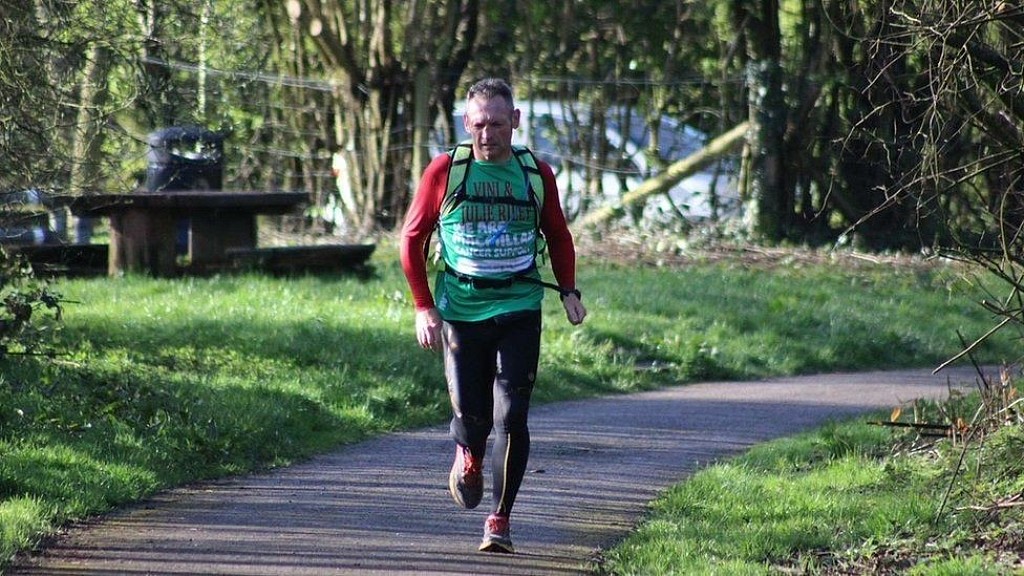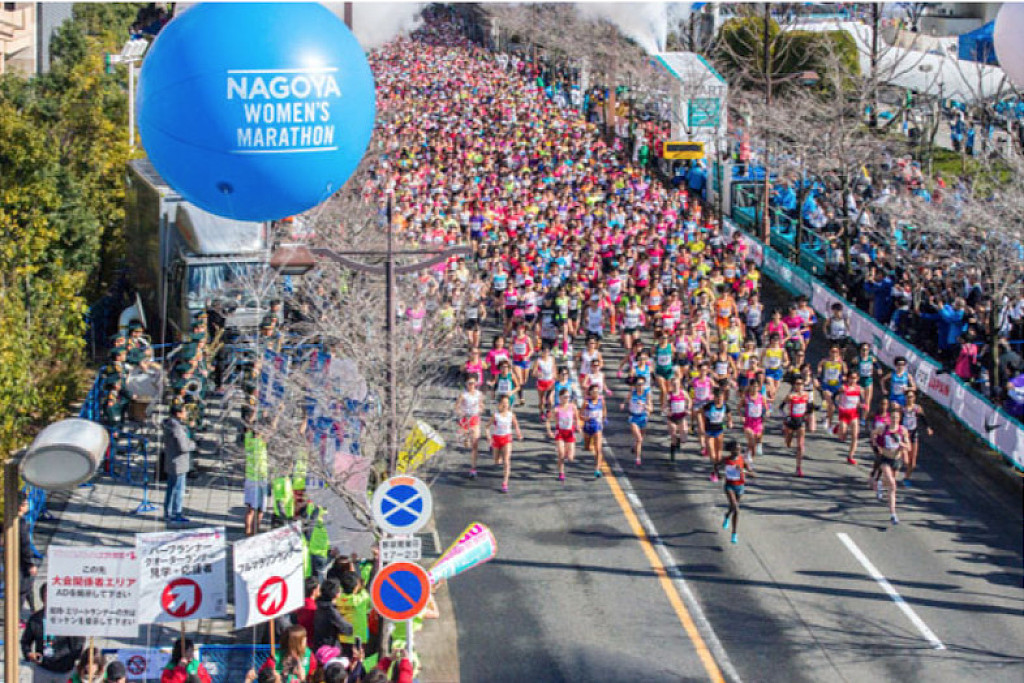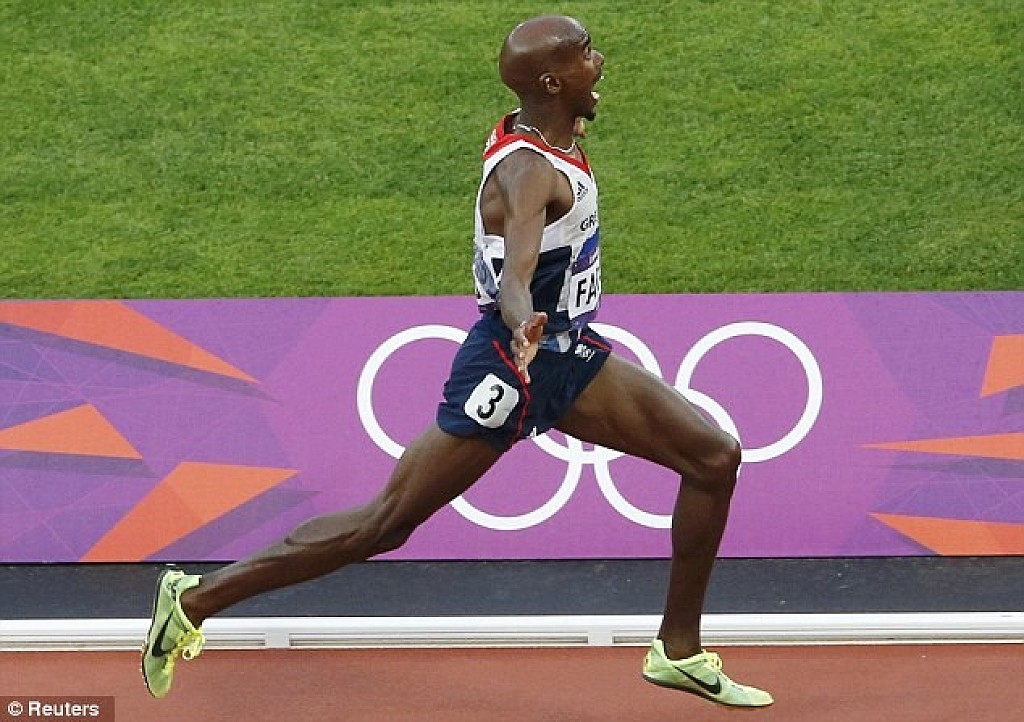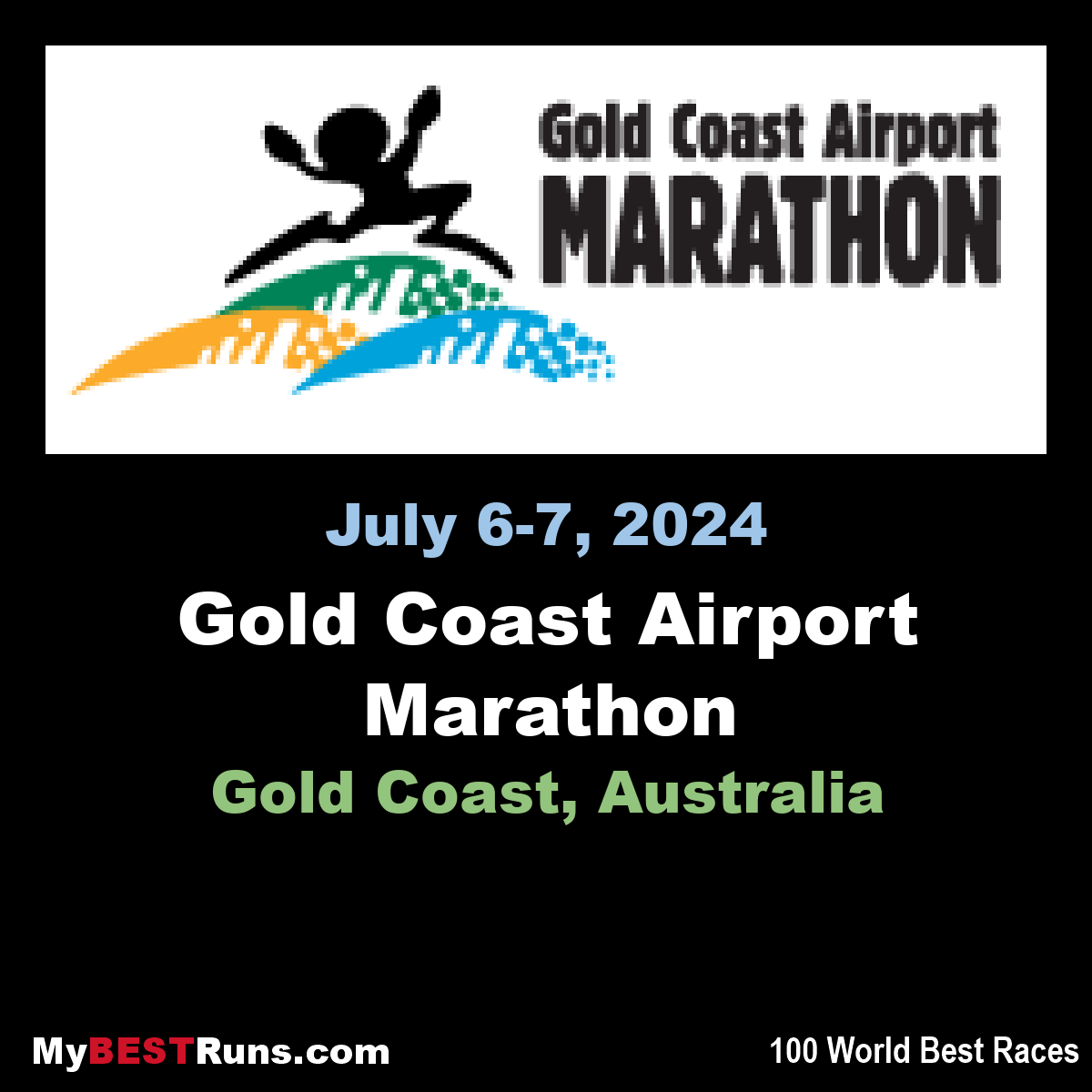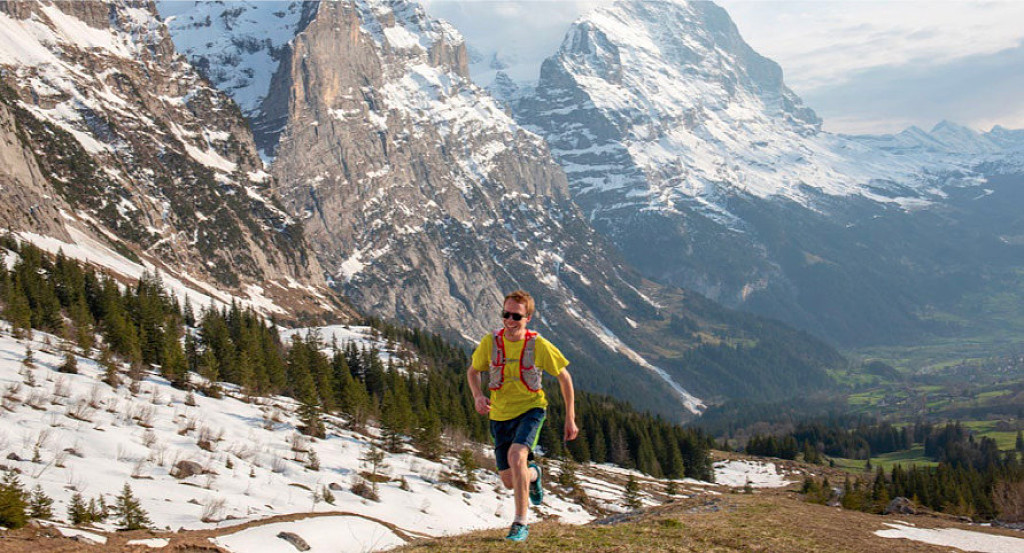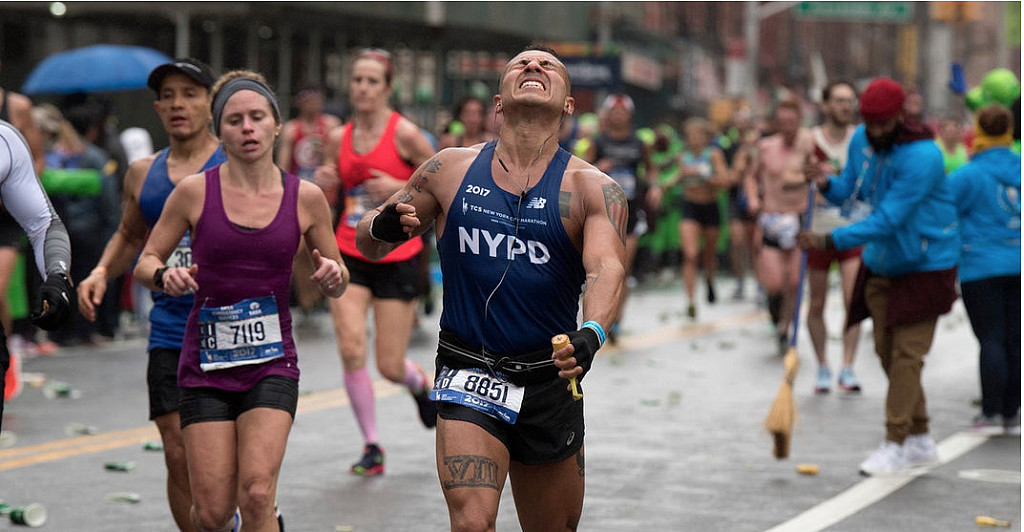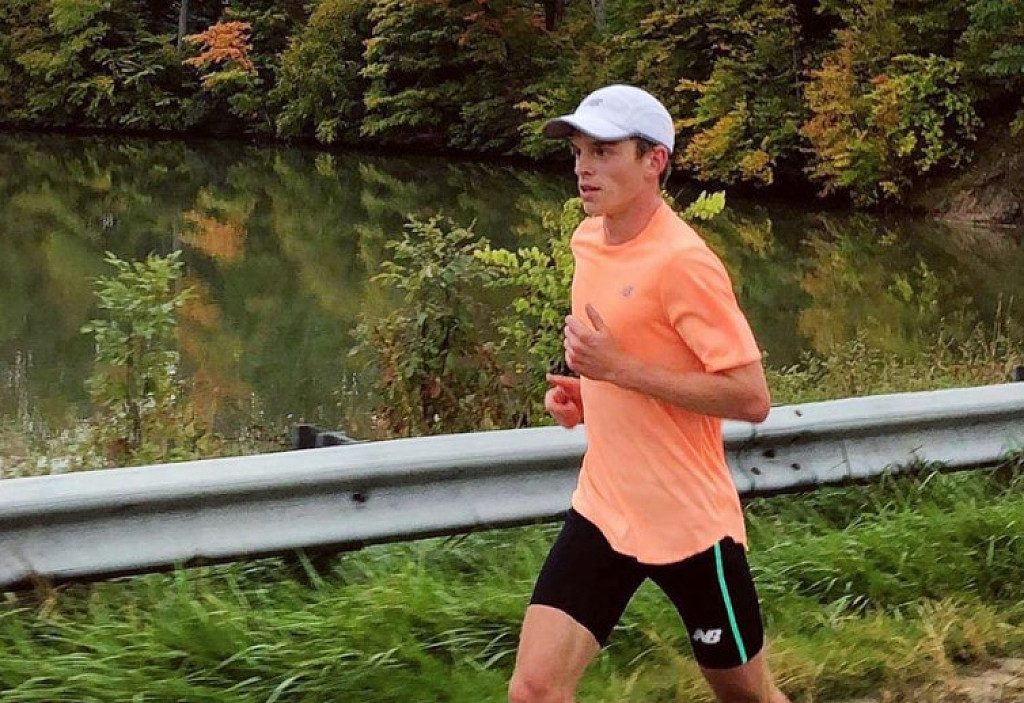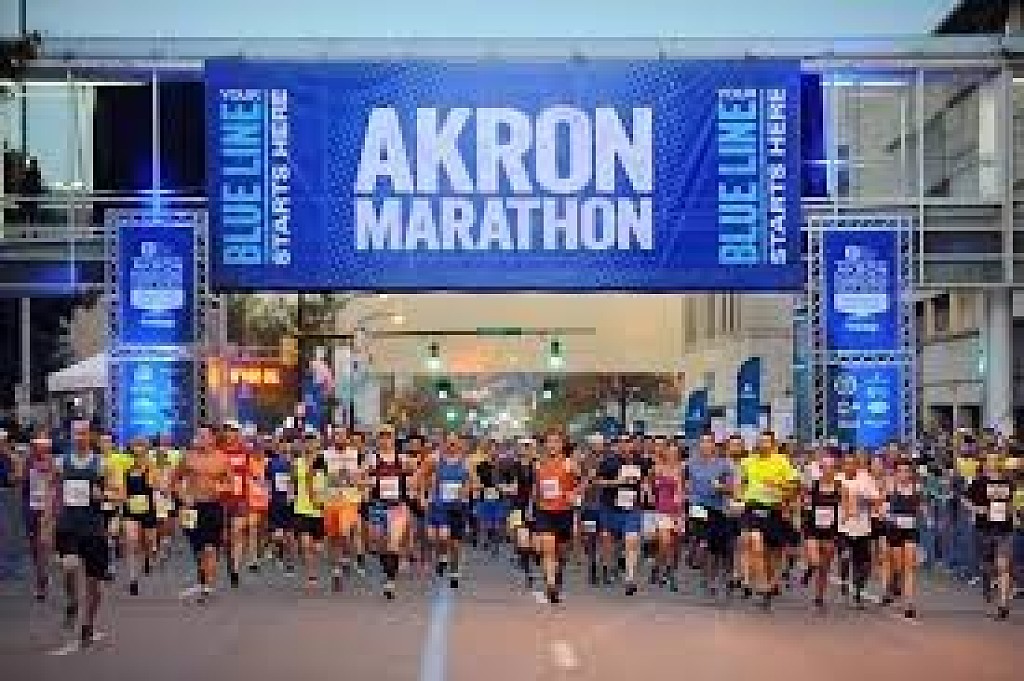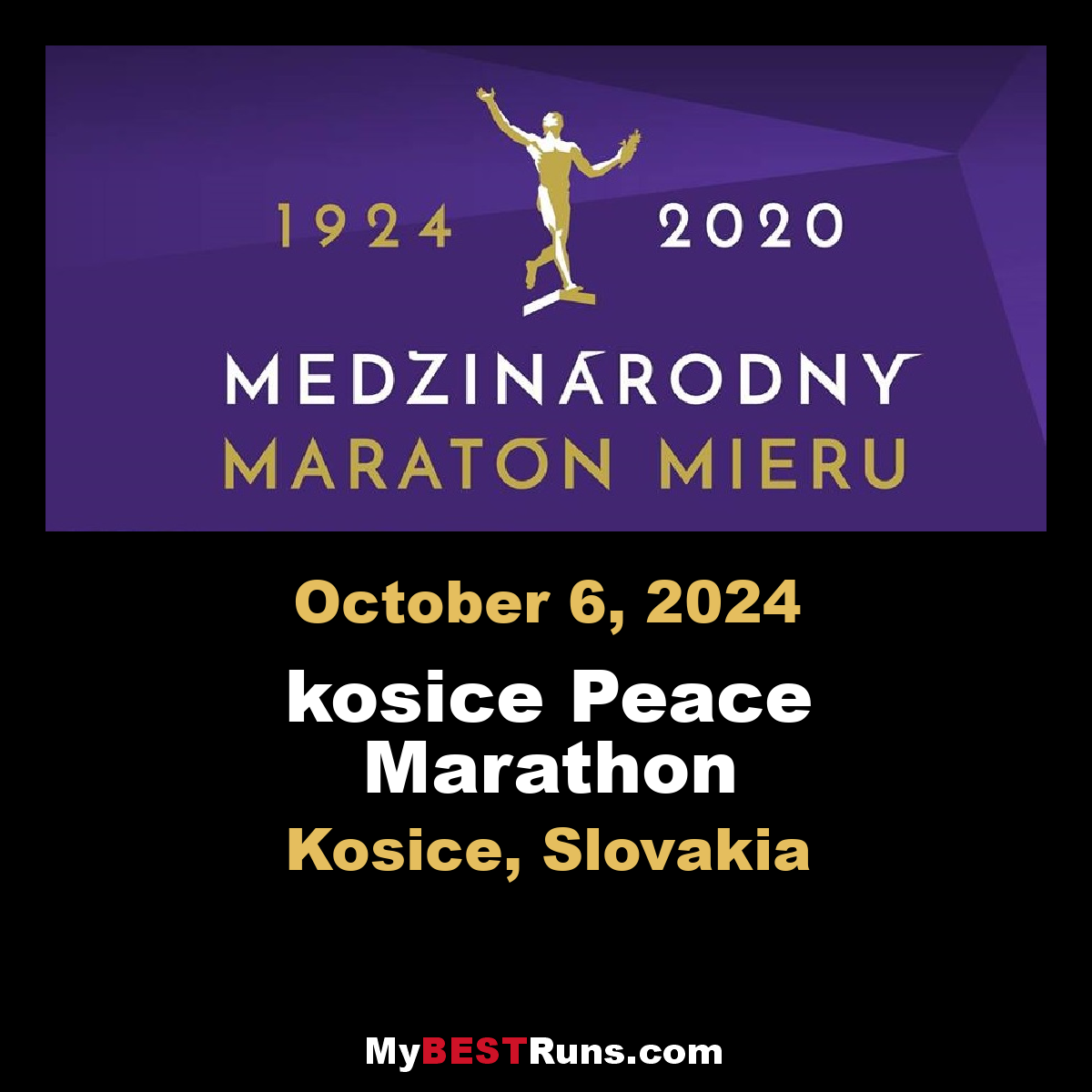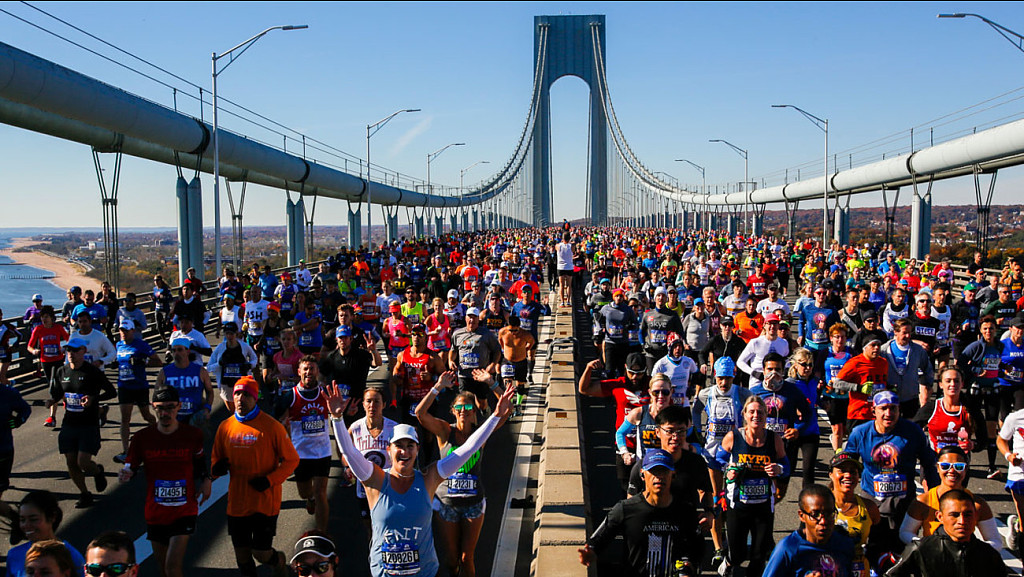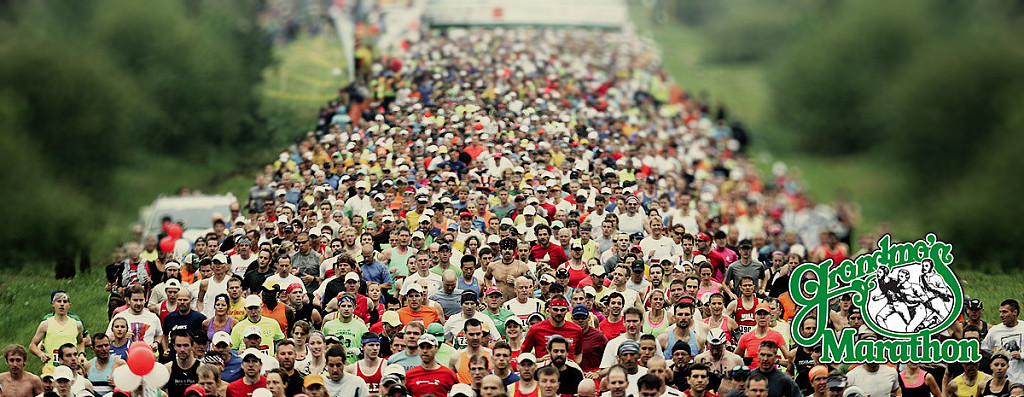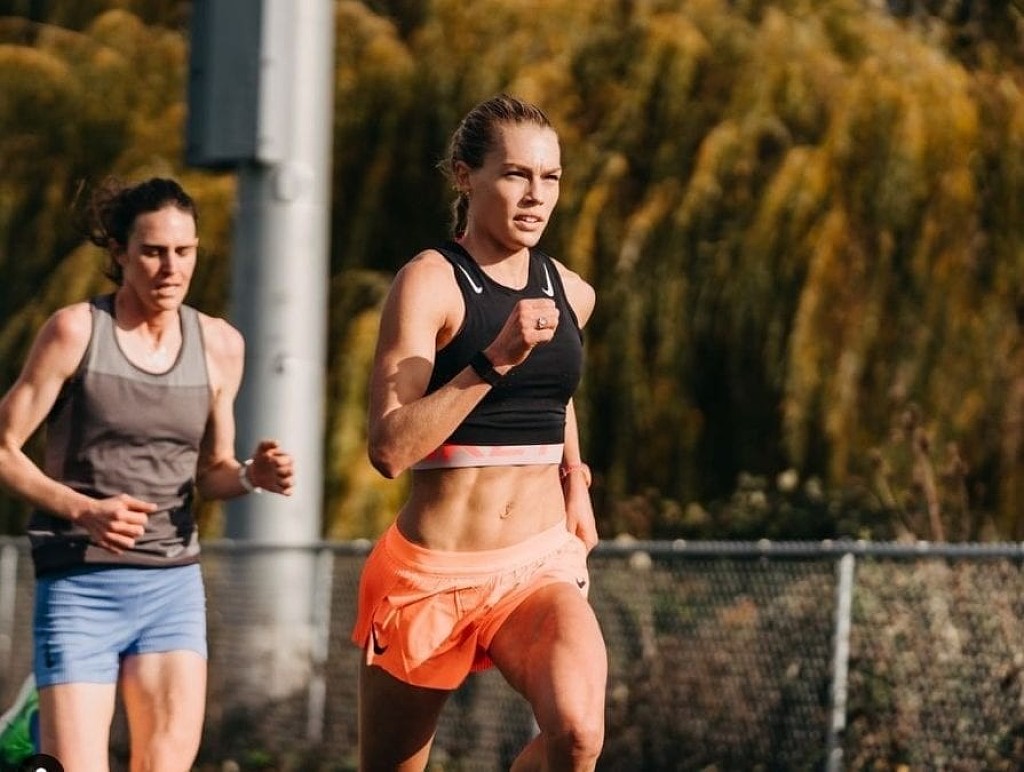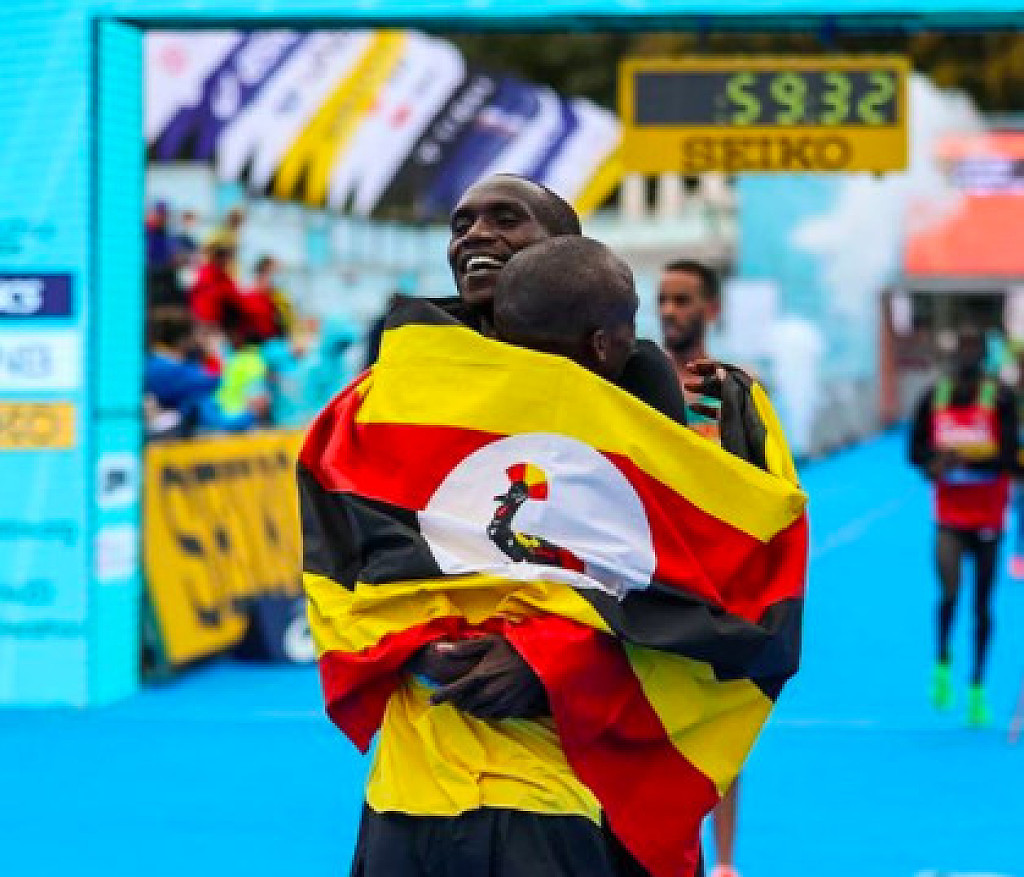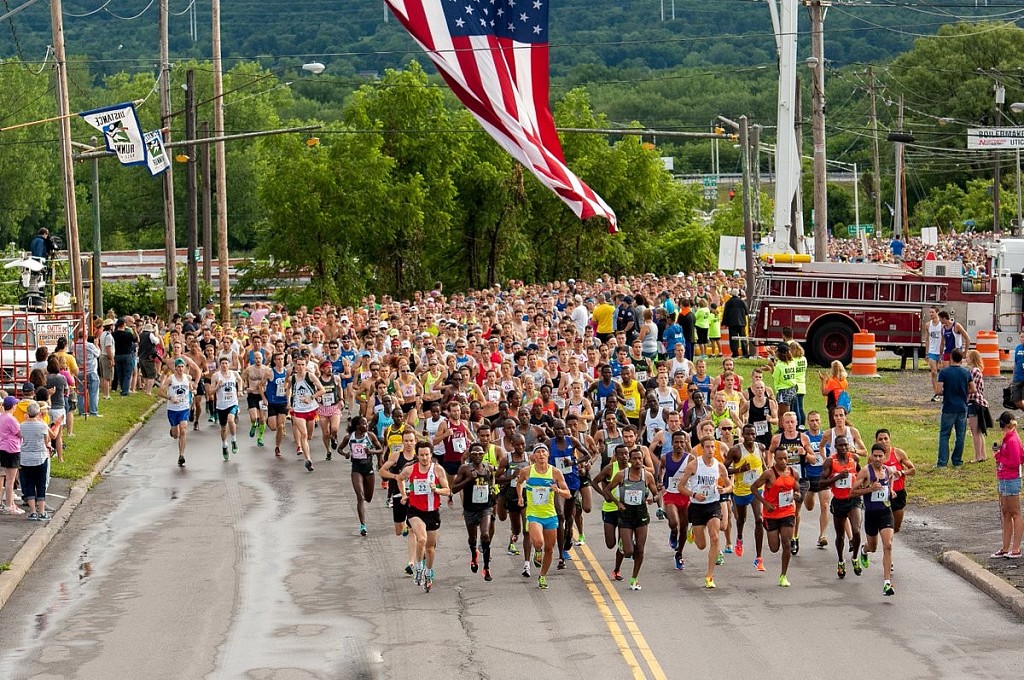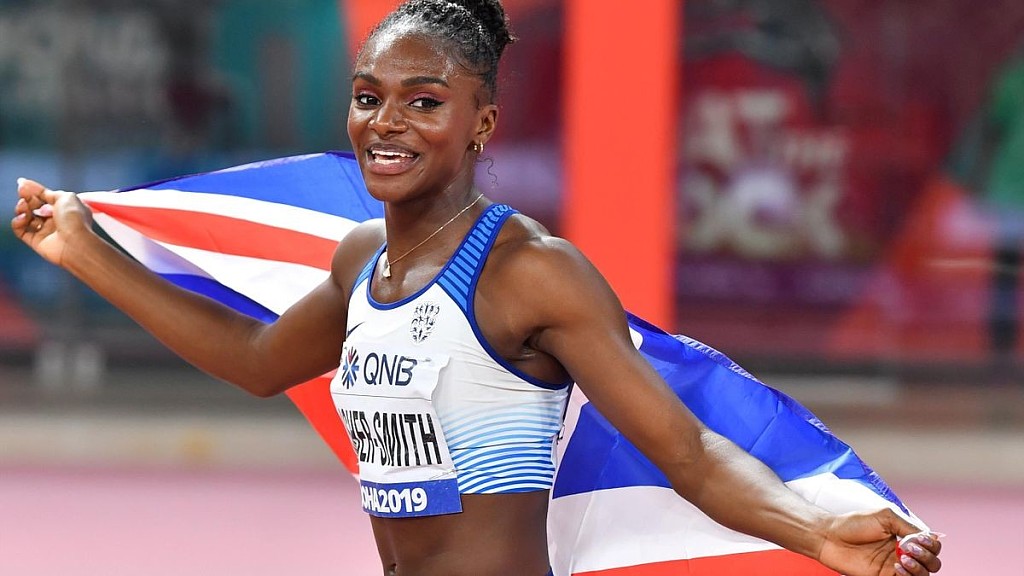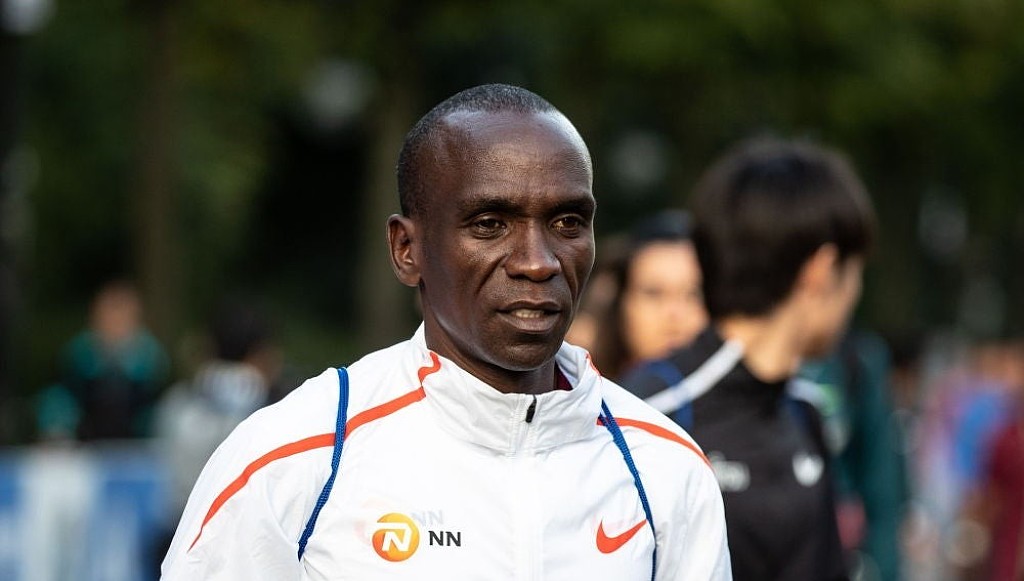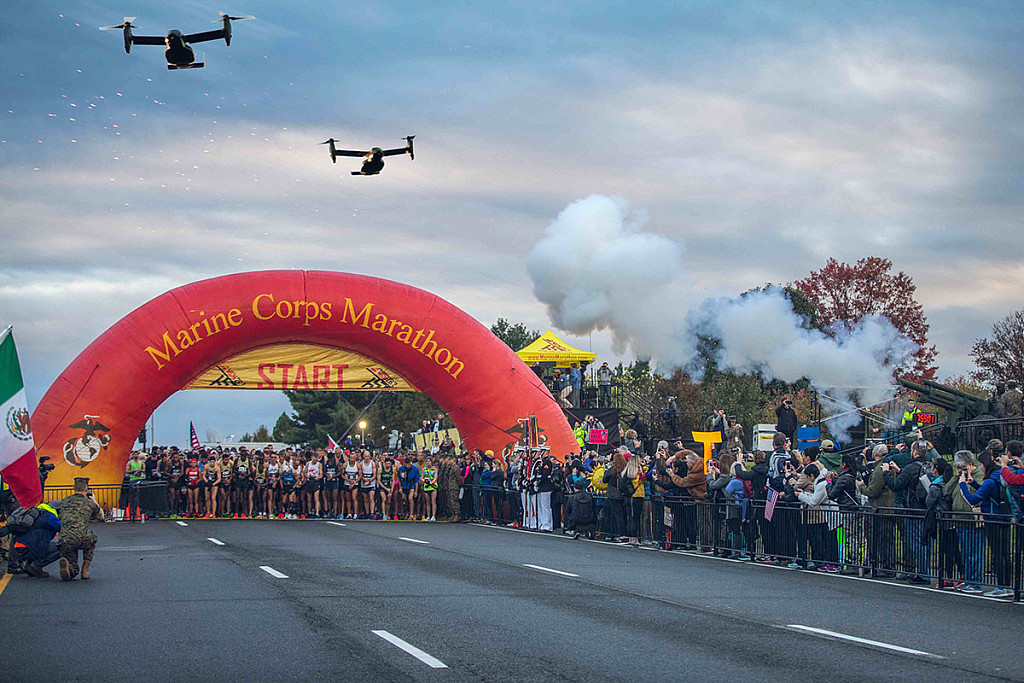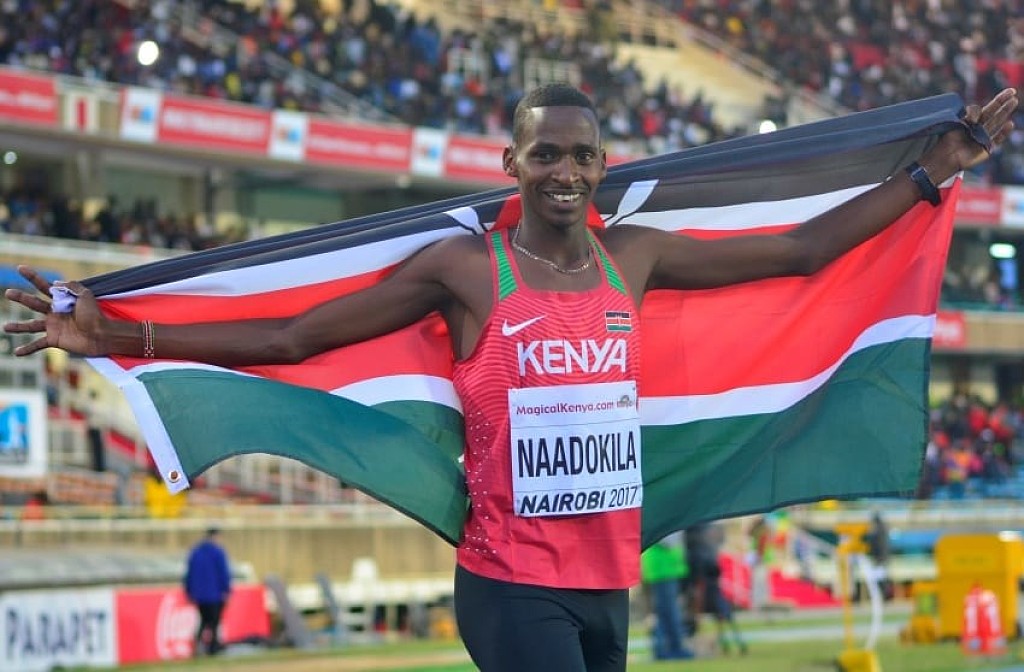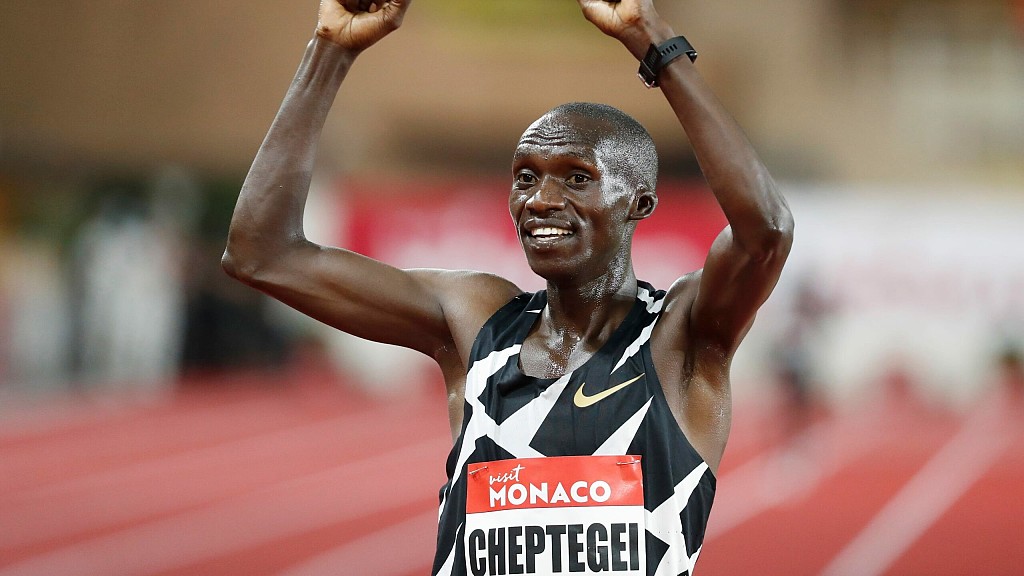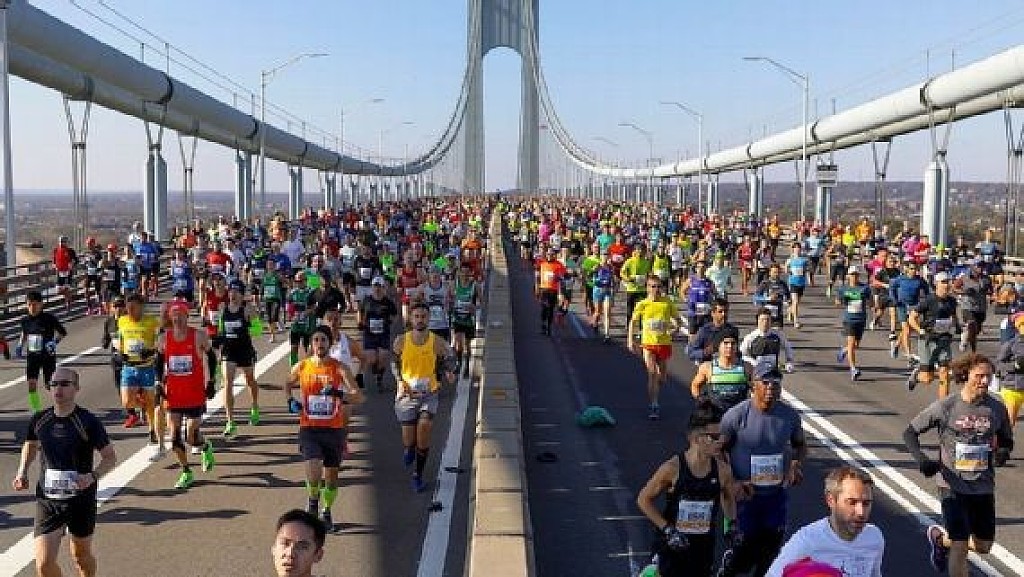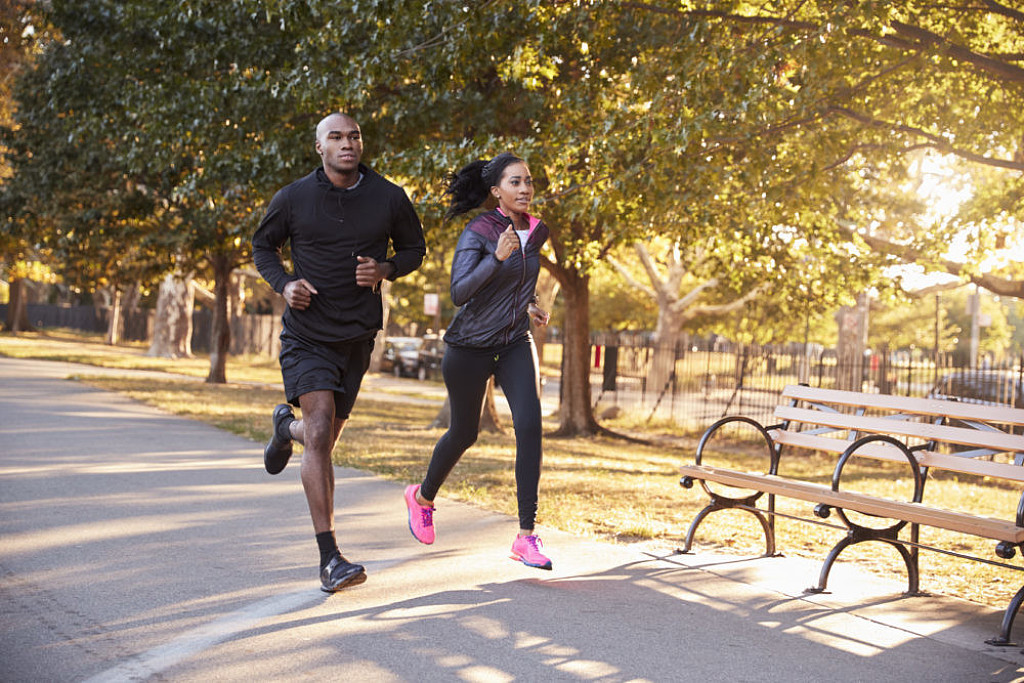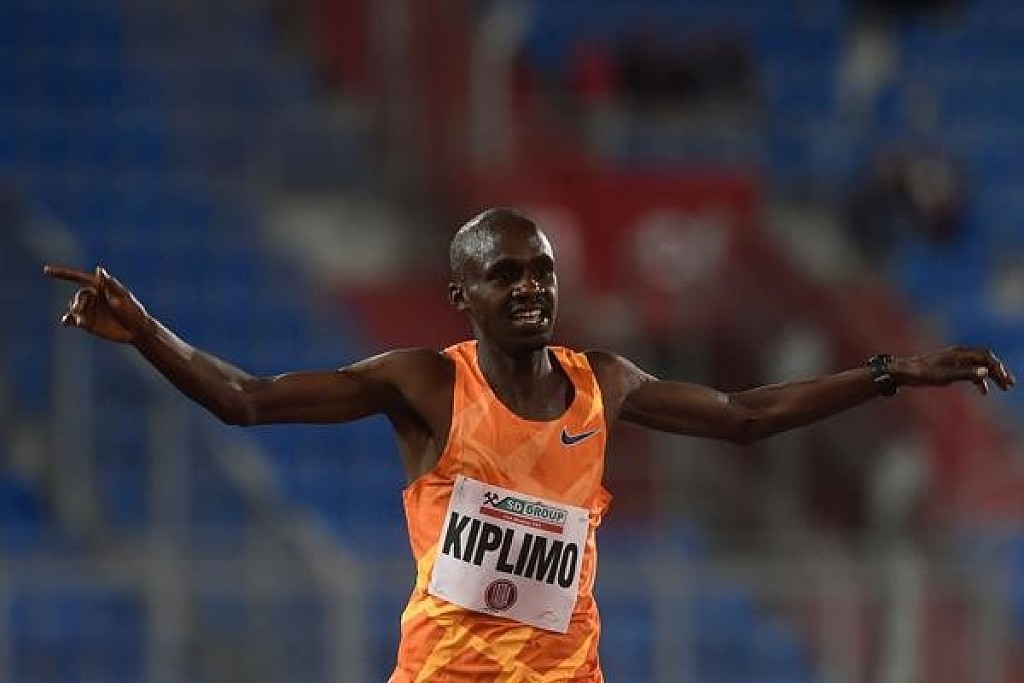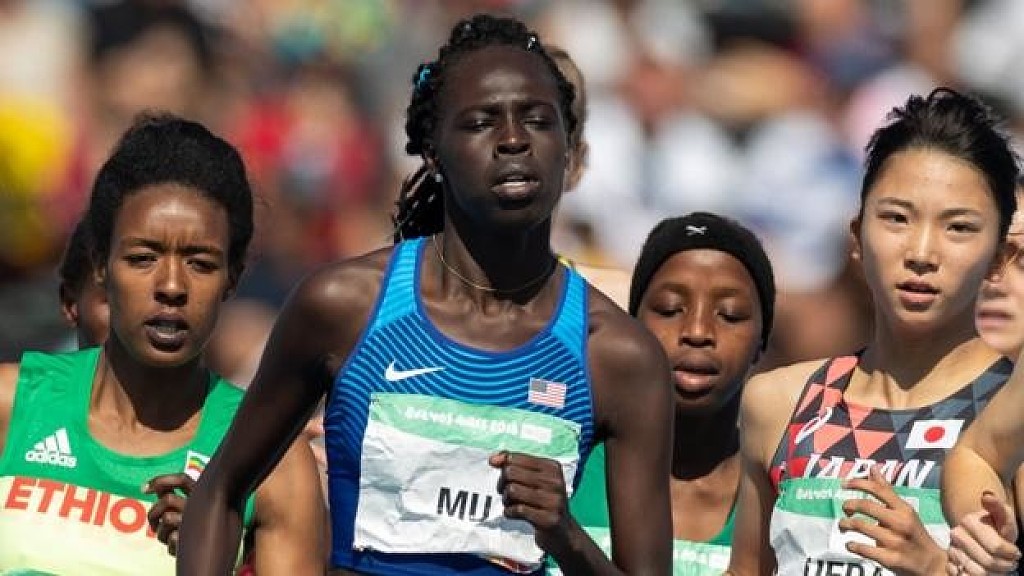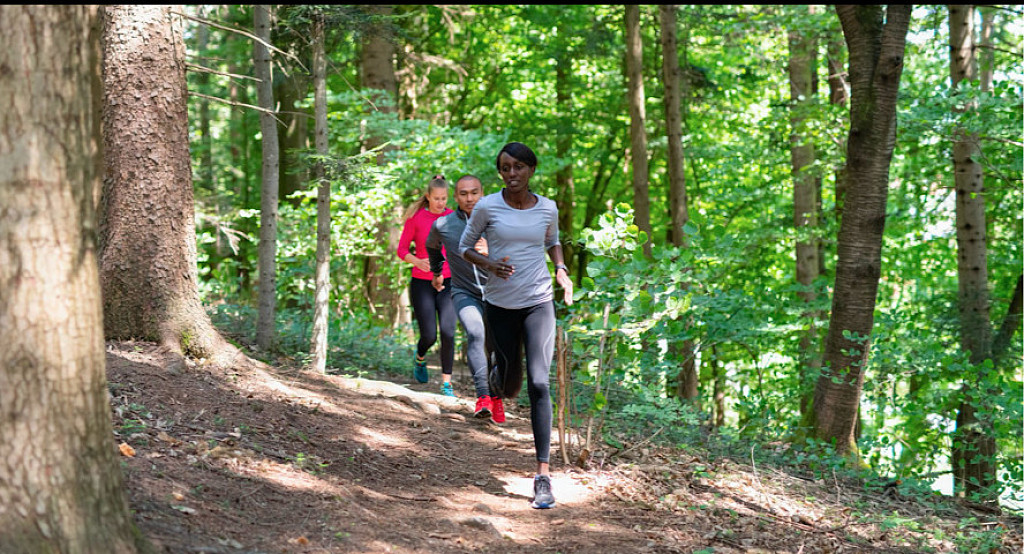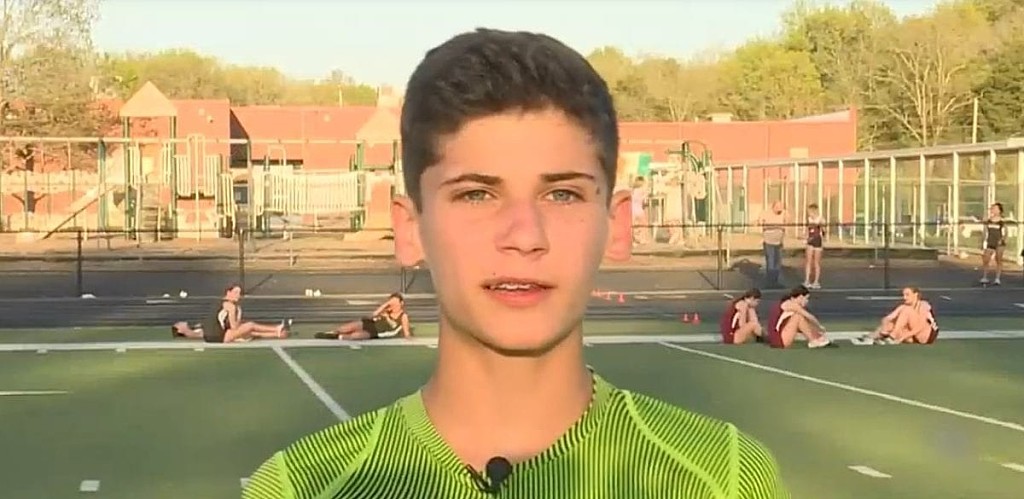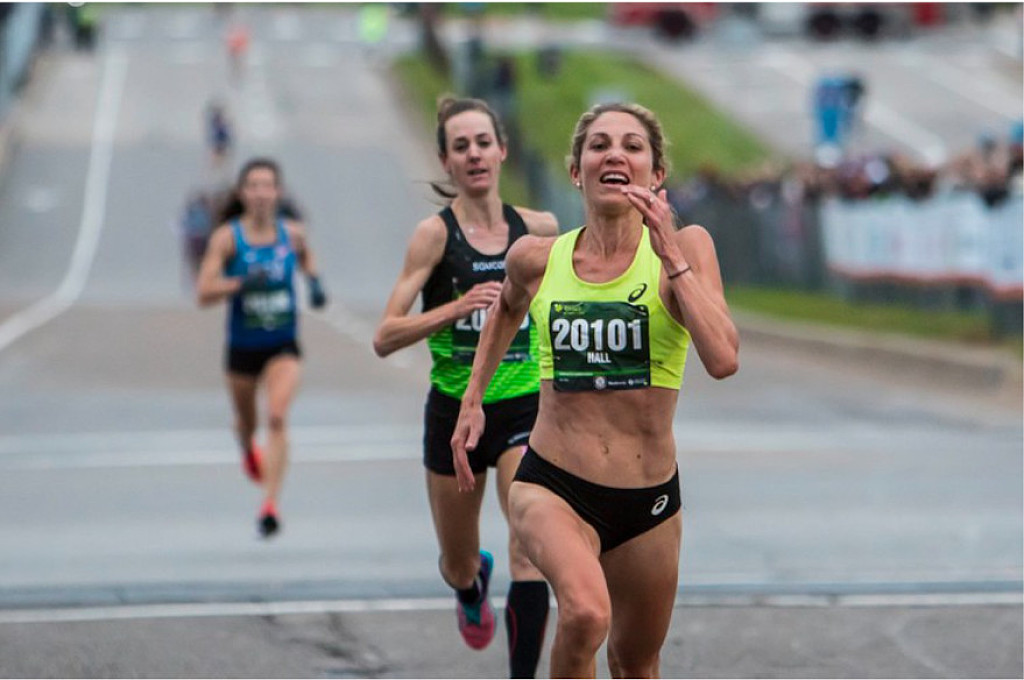Running News Daily
Running News Daily is edited by Bob Anderson in Los Altos California USA and team in Thika Kenya, La Piedad Mexico, Bend Oregon, Chandler Arizona and Monforte da Beira Portugal. Send your news items to bob@mybestruns.com Advertising opportunities available. Train the Kenyan Way at KATA Kenya. (Kenyan Athletics Training Academy) in Thika Kenya. KATA Portugal at Anderson Manor Retreat in central portugal. Learn more about Bob Anderson, MBR publisher and KATA director/owner, take a look at A Long Run the movie covering Bob's 50 race challenge.
Index to Daily Posts · Sign Up For Updates · Run The World Feed
Ethiopia´s Ketema Negasa sets men’s 50K world record with 2:42:07 run in South Africa
Ethiopia’s Ketema Negasa broke the men’s 50K world record on Sunday, running 2:42:07 at the Nedbank Runified race in South Africa. Negasa led the way as he and three other runners beat American CJ Albertson‘s previous record of 2:42:30. In the women’s race, Des Linden‘s recent 2:59:54 world record remained unbeaten, but South Africa’s Irvette Van Zyl ran a national record of 3:04:23, which is the second-fastest women’s result in history.
Negasa’s record
Negasa is primarily a marathoner, but he has never been able to match the necessary times to shine in Ethiopia. He owns a marathon PB of 2:11:07, a time that would rank him in the top 10 all-time among Canadian runners but isn’t even in the top 250 results in Ethiopian history. After his run on Sunday, though, it looks like ultras may be his forte.

It’s important to note that Albertson’s world record, which he set in November 2020, came on a track, while Negasa’s run on Sunday was on the road. Ultrarunning world bests are unique in this sense, because while Albertson and Negasa ran on completely different surfaces, their runs count in the same category of the 50K in general, as the International Association of Ultrarunners introduced a rule that eliminated surface-specific records in 2014. In other World Athletics-sanctioned events, the surface comes into play. For example, the 5K and 5,000m world records both belong to Uganda’s Joshua Cheptegei, but they’re two different times.
Negasa’s run worked out to an average per-kilometer pace of 3:15 for the full 50K, which helped him top Albertson’s result by 23 seconds. He crossed the line in first place, and he was followed closely by Machele Jonas, who also beat Albertson’s record with a 2:42:15 run. Third went to Mphakathi Ntsindiso in 2:42:18, and in fourth place was Kiptoo Kimaiyo Shedrack, who just beat Albertson’s record in 2:42:29.

Irvette Van Zyl run
Had the Nedbank Runified race been held a couple of months earlier, Van Zyl would have broken the women’s 50K world record. Since the race took place in late May, though, Van Zyl was late to the party, and her time is second-best to Linden’s. When she ran her race in Oregon, Linden became the first woman to break three hours over 50K, and she smashed Aly Dixon‘s previous record of 3:07:20.
While Van Zyl didn’t manage to beat Linden, she did crush Dixon’s result with her 3:04:23 finish, which is the new South African 50K record. Behind Van Zyl was Lilian Jepkorir Chemweno, who finished in second place in 3:05:00, which is now the third-fastest 50K in history.
(05/24/2021) ⚡AMPby Ben Snider-McGrath
Canadian Cam Levins dips under Tokyo marathon standard with a week to spare
Canada's Cam Levins raced Sunday knowing it was his last shot. Two previous failed attempts lingered in the back of his mind. He ran in the rain, and all alone for the last 25 kilometers, conditions not conducive to fast times.
"(But) nothing was going to stop me today is what I told myself," Levins said.

The 32-year-old from Black Creek, B.C., finally dipped under the Tokyo Olympic standard in the marathon with just a week to spare. Levins, the Canadian record-holder in the event, ran two hours 10 minutes 30 seconds to win the S7 Marathon in the mountains in Styria, Austria.
The qualifying standard of 2:11.30 had to be accomplished before June 1.

Levins had been well on pace twice in the past seven months, in London in October, and then in Chandler, Ariz., in December. But both times, he hit the proverbial wall with a few kilometers to go. He dropped out in London and finished almost a minute off the standard in Arizona.
"In both (races) I was feeling fine until I very, very suddenly wasn't, could barely move," he said.
He was feeling "great" again on Sunday, "but I certainly thought about (the previous two attempts) as I was coming up to 34, 35K," Levins said. "I went past it and continued to feel great, and it was a pretty emotional moment getting through that and knowing that I was going to be OK."
Levins said a big part of the problem in his previous two attempts was his fuelling - not eating enough in the few days pre-race.
"I was a little concerned about putting on excess weight when I'm not training as much leading into the marathon, so the week before the race, I was careful about what my intake was," he said. "(This week), I just kind of threw that out the window, and said, 'You know what? I'm not going to worry about that.'"
He tested out his theory in a fast half-marathon time trial last month.
Sunday's conditions on an empty Austrian highway - it's currently under construction - made his performance all the more impressive.
t rained most of the way. At the 25-kilometer mark the rain was coming down in sheets.
And neither of his two pace-setters were keeping proper pace. One dropped out just five kilometers in. The other stepped off the course when Levins passed him with more than 25 kilometers left to go.
"I had to go past 17 or 18 but he was already off pace and I needed to go. So a lot of that race was by myself," Levins said. "So, I think I have lots left in the tank."
The time doesn't guarantee Levins a spot on the Tokyo Olympic team, as four Canadians have qualified and Canada can only take three.
Trevor Hofbauer is the only Canadian guaranteed a spot after winning the Canadian championship. Ben Preisner (2:10.17) and Tristan Woodfine (2:10.51) have also run the Olympic standard.
"I hope I'm selected," he told The Canadian Press from Austria. "But I definitely feel like I've done everything that I can today, and I'm proud of my effort no matter what. Hopefully this gets me on the Olympic team. I definitely did everything I could. And I'm very happy and proud of that."
(05/24/2021) ⚡AMPby Canadian Press
Tokyo 2020 Olympic Games
Fifty-six years after having organized the Olympic Games, the Japanese capital will be hosting a Summer edition for the second time, originally scheduled from July 24 to August 9, 2020, the games were postponed due to coronavirus outbreak, the postponed Tokyo Olympics will be held from July 23 to August 8 in 2021, according to the International Olympic Committee decision. ...
more...Marathon runner completes epic 110-day challenge running the same marathon course since February 1
A runner has finished an epic challenge of completing 110 marathons in 110 consecutive days.
Gary McKee ran the same 26.2 mile (42km) circuit around his home in Cleator Moor, Cumbria, UK every day since 1 February, in memory of his father.

The 51-year-old has raised more than £110,000 for Macmillan Cancer Support and Hospice at Home West Cumbria, smashing his initial target of £10,000.
Cheering crowds welcomed him home as he crossed the finish line.
He said he was pleased the town had turned out to greet him.
"I enjoyed the moment. I did look up at the sky and think of the people who you have been running for and the people you run in memory of, and there have been lots of them. I thought about my dad," he said.
"It's a wonderful feeling because everyone had a smile on their face. It has captured the imagination of the town of Cleator Moor and further afield."
Initially after completing the challenge he was holding a cup of tea to keep warm, but he said he was "looking forward to a beer".
Mr McKee is no stranger to challenges - he has previously climbed Mount Kilimanjaro, trekked through New Zealand and ran from Land's End to John O'Groats.
He was inspired to fundraise for Macmillan after his father was diagnosed with cancer in 1997. He died from an unrelated illness in 2003.
His 16-year-old son Alfie and nephew Stuart McKee have also been taking part by cycling 110 marathons in 110 days, and a younger son, Beau, and daughter Minnie have done their own running challenges.
He has also been accompanied by friends Kevin Hetherington, who took part in 55 marathons, and Michael Watson, who joined him for 44.
Mr McKee, who would often complete a marathon before starting his shift at Sellafield, said he would not necessarily be sorry to end the challenge.
Speaking before his final run he described it as an "emotional day".
"I know that it's coming to an end and people tend to think you can't wait to get finished and have a rest," he said.
"But the way I see it is that when you finish donations stop coming in and that's a little bit of a sad part of it."
Sue McDonald, Macmillan fundraising manager for Cumbria, said: "To smash out 110 consecutive marathons is an incredible feat.
"The support from Gary's children and the community has been phenomenal - and to get messages of support from Mo Farah, Sally Gunnell and yesterday from Kevin Sinfield has given everyone such a boost over the many long days.
"There's quite a few tears of joy and pride today - and with good reason."
(05/23/2021) ⚡AMPby BBC
Japanese study finds just two COVID-19 cases out of 1,118 running events
In November, the Japanese Association of Athletics Federations (JAAF) released a study looking at the link between in-person running events and COVID-19 cases. At the time, the study focused on 787 races held in Japan between July and October, and just one COVID-19 case was found. The JAAF has continued with this research, and as Japan Running News (JRN) reports, the numbers are still incredibly low, and while the study now includes 1,118 races, only one other COVID-19 case has been linked to a running event, bringing the total to two.
The updated JAAF study expanded its scope to look at races held between April 1 of last year and March 31, 2021. This added many more races to the study, with a total of 1,044 track meets and 74 road races covered. These 1,118 events featured 750,389 participants (including runners and race officials), two of whom tested positive for COVID-19 within two weeks of the races they attended.

Track races accounted for most of the race participants in the year-long study period, with 568,271 runners and 147,942 officials. Of that group, one person tested positive for COVID-19. The other positive case came from one of Japan’s road races, which collectively hosted 25,936 runners and 8,240 officials.
An important note in the study is that more than half of these races did not allow spectators. There were some races that allowed fans, but most didn’t, which likely helped keep COVID-19 cases down. JRN adds that vaccinations only began in mid-April in Japan, meaning the study was in no way influenced by the vaccines’ effects.
This study is good news for the International Olympic Committee and athletes worldwide hoping to compete at the upcoming Tokyo Games, as it helps to show that sporting events (or running races, at least) can be run safely during a pandemic without becoming super-spreader events. Of course, the Olympics will be a much bigger affair than any of the races included in the study, but the JAAF’s findings are still reason to be hopeful.
(05/23/2021) ⚡AMPby Running Magazine
Eliud Kipchoge wants to run ‘all major marathons’
Boston, New York, and Tokyo are on the GOAT marathoner's bucket list
Eliud Kipchoge has revealed he would like to run “all major marathons” in the remainder of his career.

Speaking to Gordon Mack on the Flotrack podcast, the GOAT marathoner said because he has already run Berlin, London, and Chicago, the remaining major marathons on his “bucket list” were Boston, New York, and Tokyo.

He said because he plans to focus firstly on the Tokyo Olympics this summer, before a busy autumn of marathons, he would “close” his bucket list before “jumping in” again on January 1 2022.
Kipchoge also suggested he might be interested in dabbling in ultrarunning for a fresh challenge.
“I would love to try 80km, 60km. I need to go to California and hike for six hours," he said. He added that he was looking forward to the next phase of his running after his professional career is over: “I’m really excited to approach life in another dimension,” he said, “to go up the mountains with different people, with different lifestyles.”
He said, “I’m really excited to instil inspiration in the youth of the whole world. To travel along the big cities, in every country if possible, to send positive vibes.”
Kipchoge was speaking to Flotrack ahead of taking part in NN Running’s MA RA TH ON virtual marathon relay this weekend. Like others taking part in the virtual race, he will run a 10.5km relay on May 22-23 which will be added to the efforts of three teammates to make up the full marathon distance.
(05/23/2021) ⚡AMPby Runner’s World
TCS London Marathon
The London Marathon was first run on March 29, 1981 and has been held in the spring of every year since 2010. It is sponsored by Virgin Money and was founded by the former Olympic champion and journalist Chris Brasher and Welsh athlete John Disley. It is organized by Hugh Brasher (son of Chris) as Race Director and Nick Bitel...
more...Canadian Ultrarunner Runs 1,000K in Fewer Than 10 Days to Win the Great Virtual Race Across Tennessee
After finishing in 148th overall in last year’s race, Morris was on a mission to win.
For the second year in a row, the Great Virtual Race Across Tennessee (GVRAT) has been won by a Canadian, and once again in a record-breaking performance.

Varden Morris, 50, who lives in Calagary, Alberta and is from Jamaica, completed the 1,000K distance (a little more than 621 miles) in 9 days and 23 hours, averaging more than 100K a day. Morris beat out fellow Canadians Matthew Shepard, 33, and Crissy Parsons, 40, who finished in 13 days and 15 days, respectively.
“Honestly, I’m in disbelief,” Morris told Runner’s World. “Just hearing stuff on social media about the magnitude of what I just did. I knew it was possible but after finishing and realizing that not many people have done what I’ve done, it baffles my mind.”
Last April, Barkley Marathons creator Gary “Lazarus Lake” Cantrell came up with the idea of hosting a virtual ultra, giving people four months to run twice the distance of the Last Vol State 500K—and more than 19,000 runners signed up. One of them was Morris, who went out with the fastest of the bunch, but due to lack of training, he picked up a few injuries and was forced to slow down. He finished 148th overall.
After that, Morris decided he wanted to win the 2021 race, so he studied the training methods of successful ultrarunners and increased his mileage. By the start of 2021, he was running about 14 miles a day for a week before upping that mileage by four miles to his daily total until he reached a max of 36 miles a day. In March alone, he covered 965 miles.
On May 1, when GVRAT finally began, Morris set out to not only win, but to also finish in fewer than 10 days.
“My strategy was to run as close to possible to the same average distance every day,” he said. “Most people try to put in most miles in the first few days. My plan was to be consistent. I went a little above my average the first day by 10 percent, but I was doing mostly the same miles every day.”
Morris ran around his neighborhood in Calgary, with a routine of running for six hours and resting for five. He rotated through three pairs of Asics shoes, and for fuel, he focused on solid foods like boiled eggs with veggies, Jamaican sweet potato pudding, toto (a Jamaican pastry), and fruit, such as grapes, bananas, oranges, and watermelon.
No day was easy. Morris said he often found himself contemplating if he would complete the run he was on. On the first day, he picked up a groin injury that lasted a couple days. Another day, he ran through rain and hail with winds over 25 mph.
“Every minute was important,” he said. “Each day was more and more difficult. There was a sense of uncertainty if I would finish. It wasn’t something easy. It was something very difficult. We just took it one day at a time.”
When Morris woke for his final push of 44 miles, he was hurting but he knew he was ahead of his fellow Canadians. His wife, who also served as his crew chief, joined him for the first 15 miles of that final push, and his daughter ran the final four miles with him.
Celebrations included a big meal at home of meat and veggies and some non-alcoholic wine. With the record in hand, Morris plans on running back across Tennessee; part of the GVRAT format allows runners to run back across Tennessee as many times as they like during the four-month period.
Morris said he will be taking it much slower back across.
During last summer’s GVRAT, Cantrell faced criticism when he deleted a GVRAT finisher’s post on Facebook that described the runner’s experience receiving racist and homophobic slurs during his runs.
(05/23/2021) ⚡AMPby Runner’s World
Twenty-one dead as extreme weather hits ultramarathon in China
Hail, freezing rain and high winds hit runners at high-altitude, 100km race in Yellow River stone forest in Gansu province
Twenty-one people have died after hail, freezing rain and high winds hit runners taking part in a 100km (62-mile) ultramarathon in a mountainous part of northern China.
More than 700 rescuers and army personnel used thermal-imaging drones and radar detectors to try to find runners caught by the storm in the race in Yellow River stone forest near Baiyin in north-western Gansu province, officials said.
At around noon, the high-altitude section of the race between 20-31km was suddenly affected by disastrous weather. In a short period of time, hailstones and ice rain suddenly fell in the local area, and there were strong winds. The temperature sharply dropped,” Baiyin city mayor, Zhang Xuchen, said on Sunday.

Rescue teams were dispatched but at around 2pm, weather conditions worsened and the race was immediately called off as local authorities sent more rescuers to help, Zhang added.
“This incident is a public safety incident caused by sudden changes in weather in a local area,” he said, adding that provincial authorities will further investigate its cause.
Temperatures in the mountainous terrain dropped further overnight on Saturday, Xinhua news agency said, making search and rescue “more difficult”.

A “significant” drop in temperatures had been forecast in most parts of Gansu over the weekend but there was anger on Chinese social media that officials had failed to plan for bad weather.
“Why didn’t the government read the weather forecast and do a risk assessment?” one commentator wrote.
“This is totally a man-made calamity. Even if the weather is unexpected, where were the contingency plans?”
At the news briefing on Sunday, Baiyin officials bowed and apologised, saying they were saddened by the tragic deaths of the runners and that they were to be blamed.
The Gansu provincial government has set up an investigation team to further look into the cause of the deaths, the People’s Daily reported.
Gansu, one of China’s poorest regions, borders Mongolia to the north and Xinjiang to the west.
Yellow River stone forest is famous for its rugged mountain scenery marked by stone stalagmites and pillars, and is used as a location in many Chinese television shows and movies, according to the China Daily.
Its rock formations are believed to be 4 billion years old. Xinhua said a total of 172 people were taking part in the race.
(05/23/2021) ⚡AMPMo Farah has revealed his daily routine as he trains for the Tokyo Olympics this summer
On a typical day, Farah said, he’ll have a little toast for breakfast, before going out for a 10 or 12 mile run around 9 or 9.30 am. When he has come back and showered, he might answer a few emails before taking a nap. In the afternoon he’ll go for a light jog, covering five or six miles. In total he will usually run around 17 to 18 miles, apart from Sundays when he will often do a long 20 mile run.
At the time of recording, Farah was taking part in a training camp in Flagstaff, Arizona, 7,000 feet above sea level. Farah said a handful of fellow Team GB athletes were due to join him there, including Laura Muir and Andrew Butchart.

Although he is the reigning Olympic champion, Farah still has to qualify for the games at the Müller British Athletics 10,000m Championships in Birmingham on Saturday, June 5.
Asked about his high-mileage training regime, Farah told Wicks, 'You have to be able to put in the work.' 'Anything is possible in life if you condition yourself, condition your body – you can get through it.'

He added: 'With me, I have to run that kind of distance and condition my body. I’m not just going to turn up at the Olympics and try and win off the back of one month, two months, three months – it’s the whole leading up to it. Condition your body, get yourself in the best shape that you can.'
Describing how he maintains his focus, Farah described himself as 'an addict.'
He said, 'When you go out for a run, or when you do a session, you feel that relief – that’s what drives me. Having so many people behind you and knowing you’re doing it for your country, that’s what keeps me going.'
He added, 'I think what keeps me going to this day is 2012 – what I did in 2012 and how it happened – that bit drives me every day.
'Over the years I’ve learned from races and making mistakes – it’s OK to make mistakes. If you get it wrong in a race, it’s OK! As long as you learn what went wrong, it’s easier to fix it' Farah told Wicks.
(05/22/2021) ⚡AMPby Jacob Moreton
Tokyo 2020 Olympic Games
Fifty-six years after having organized the Olympic Games, the Japanese capital will be hosting a Summer edition for the second time, originally scheduled from July 24 to August 9, 2020, the games were postponed due to coronavirus outbreak, the postponed Tokyo Olympics will be held from July 23 to August 8 in 2021, according to the International Olympic Committee decision. ...
more...2021 Gold Coast to be biggest mass event in Australia
The Village Roadshow Theme Parks Gold Coast Marathon will be the largest mass-participation event in Australia since COVID-19 decimated the event and festival industry across the nation more than 12 months ago.
With the lure of an all-Aussie line-up on the podium this year the elite athlete participation is looking exceptional with qualifying opportunities for World Championships 2022 and Birmingham 2022 Commonwealth Games at stake.

Australians haven’t enjoyed a win in the Gold Coast Marathon since 2009 when Lauren Shelley took out the female 42.195km event and in 2006 when Lee Troop won the men’s event.

Tourism and Sport Minister Stirling Hinchliffe welcomed the return of the Gold Coast Marathon.“We know big events like the Gold Coast Marathon are important for supporting local jobs and our economic recovery,” Mr Hinchliffe said.
“The Gold Coast Marathon is shaping up as significant national event which is great news for accommodation providers and the Gold Coast’s many world-class holiday experiences.”
Events Management Queensland CEO, Cameron Hart said they were anticipating between 16 – 20,000 runners this year for an event that might look and feel a little different to previous years, but it would be a fitting celebration of the return of community and mass participation events.
“We have had to make some changes to accommodate the implementation of a COVID-safe plan however, I think people understand the need for some precautions in the best interest of everyone’s health and wellbeing.
“One of the biggest changes has been moving the ASICS half marathon from Sunday morning to Saturday morning. This means the number of people in the precinct and on the course is considerably less with the Village Roadshow Theme Parks Marathon still kicking off on the Sunday morning, but a little earlier than in previous years.
“I am delighted that we have already attracted some of Australia’s greatest marathon and wheelchair marathon and half marathon athletes. With their sights on wearing the green and gold in 2022, we are set for some very serious racing.”
Destination Gold Coast and Events Management Queensland Chairman, Paul Donovan said whilst they would certainly miss the international competitors at this year’s event the fact that Australians had really embraced the opportunity to compete again would make it a spectacular experience that will revitalise the event industry.
To accommodate the mailing of all participant race kits and cater for changes in supply chains entries for the Village Roadshow Theme Parks Gold Coast Marathon and associated races will close at 11:59pm on Friday June 4, 2021.
(05/22/2021) ⚡AMPGold Coast Airport Marathon
The Gold Coast Airport Marathon is held annually in one of the most popular holiday destinations in the world. It is Australia’s premier road race and was the first marathon in the country to hold an International Association of Athletics Federations (IAAF) Road Race Gold Label. The event is held on the first weekend of July and attracts more than...
more...Study finds that 28 per cent of runners got started running during the pandemic
A recent study from RunRepeat found that 28 per cent of current runners got started in the sport during the pandemic. The study surveyed close to 4,000 individuals, and it found out more about these new runners and what they want out of running. From training motivations to race preferences, their answers may be a surprise to veteran runners. With that said, when the pandemic is considered, their responses make a lot of sense.
Race participation


While most “pre-pandemic runners,” as RunRepeat refers to them, love to race, about half of new runners aren’t too keen on the idea of competition. Of those surveyed, 63 per cent of pre-pandemic runners plan to race (either virtually or in person) in the coming 12 months, but just over 50 per cent of new runners said they will do so.
Of the runners who said they will race at some point in the next year, a whopping 85 per cent of pre-pandemic runners said they hope that event will be held in person. The new runners who said they would race, though, don’t mind virtual events as much, and only 68 per cent of the group said they want to run an in-person race.
That leaves a relatively large chunk (about 31 per cent) of new runners who would prefer to compete in virtual races. RunRepeat found that new runners are 115 per cent more likely to run a virtual race than pre-pandemic runners. At first, this might sound ridiculous to pre-pandemic runners, but it makes sense if you think about how these new runners entered the sport.
New runners didn’t get into running for races, and it was instead used as a way to pass the time and keep fit while gyms were closed around the world. Plus, new runners started running when their only competition option was to race virtually, and with no in-person events to compare these runs to, they prefer the virtual format.
Running motivations
Motivations to run also vary between the two groups. About 34 per cent of pre-pandemic runners are motivated by competition, but that only drives 22 per cent of new runners. Social interaction is another reason to get out for some people, but this only excites 11 per cent of new runners compared to 16 per cent of pre-pandemic runners. This makes sense, too, as new runners weren’t permitted to run together, so they have yet to experience the fun of group workouts.
There’s no denying that we have experienced a running boom in the past year or so, and that’s due to the pandemic. It was easy to understand why so many people picked up running during lockdown (it was one of the only activities people could do), but it wouldn’t have been as easy to guess why these new runners have stuck with the sport.
(05/22/2021) ⚡AMPby Running Magazine
HOW ULTRARUNNER TOM EVANS ESCAPES HIS COMFORT ZONE
The ultrarunner started his sporting career for a bet, and discovered a love of pushing his limits that has kept him moving ever since.
“My thought process can best be described as ‘minimal’,” laughs Tom Evans, describing his 2017 entry into the six-day, 251km Marathon des Sables, held annually in the Sahara Desert. As well as being possibly the toughest race on the planet, it also happened to be Evans’ first. “I knew it was the hardest race out there, and I thought there was no point in doing the easy ones,” he says. “I’d jump straight in at the deep end.”
Though he lacked any formal training, Evans’ self-belief carried him to an unbelievable third place – the fastest time run by any European in the race’s history – and, naturally, skyrocketed him into the world of professional ultrarunning. “I was always sporty,” explains the 29-year-old. “I represented England at rugby, hockey and athletics events while at school. Looking back, I wasn’t necessarily the best, but I always tried the hardest. After school, I realised I didn’t want to go to university, so at 18 I joined the army. I’d always felt I had something to prove, and in the army an easy way to do that was by keeping fit. The army is an endurance-based organisation, which suited me really well.”
After the Marathon des Sables, Evans capped off a successful streak by winning the 101km CCC race at the 2018 Ultra-Trail du Mont-Blanc. The following year, he left the army to pursue running full-time, and he hasn’t looked back. Next on his schedule is Red Bull’s official charity partner event the Wings for Life World Run on May 9 – a unique race with no finish line, in which runners compete against a ‘catcher car’ until it overtakes them. This year’s participants will still compete at the same time, but – due to COVID-19 restrictions – they’ll run against a virtual car, via an app.

It’ll be different from Evans’ past experiences at the annual event, but he’s a master of adaptability. Currently holed up in Loughborough with his fiancée, professional triathlete Sophie Coldwell, he’s keeping busy by switching snowy trails for road running and has even smashed the Three Peaks challenge on a treadmill. Here’s how Evans keeps pushing forward...
The Red Bulletin: You came third in the Marathon des Sables after entering for a bet. How?
Tom Evans: My friends did [the race] in 2016 and finished in the top 300. I thought I could do better, and over a few beers they bet me I couldn’t. I signed up the next morning. There’s a lot of crossover with the military, because you’re sleeping outside under the stars and pushing yourself to your limits every day. Through running the race, I discovered this ability to suffer for a very long time in the heat. Two years later, I left the army to become a full-time professional athlete.
Ultrarunning is one of the most punishing sports. Is it all down to this natural ability?

No, I train very hard and I get used to suffering. I know in any race there will come a point when I’ll want to stop. When I get there it’s like, ‘Right, I knew it was going to happen, so now’s the time to embrace it, but also know that the minute after you stop, it’s going to stop hurting.’ I think I can withstand a lot, but I want to know how long I can actually keep feeling uncomfortable for.
Many people struggled to find focus during lockdown. What kept you motivated?
It’s very easy to keep a habit once you have it, but it’s very difficult to start the habit in the first place. I think people go from never running at all to loving it. Then there’s the other side of that: as soon as you do stop something like running, it’s very difficult to start again. So, for me, it’s about keeping as much consistency as possible. I always set mid-term and long-term goals – I’m very goals-based. Having gone from boarding school to the military, I like knowing what I’m doing.
Typically I drive to the Peak District or Snowdon or the Lake District, where there are phenomenal trails, but I wasn’t able to do that in lockdown. So I started running from my door instead. Road running suits me well, because it’s easier to collect data on your run. You don’t have to pigeonhole yourself into a certain distance or event. I run because I love running, and it’s a brilliant thing to be able to do.
What’s your plan for the Wings for Life World Run?
Because it’s a charity event, my goal is to raise as much awareness for spinal cord research as I possibly can by putting in a performance that people talk about. It’s going to be a long, uncomfortable run, which is my sweet spot. I think the best way people can physically prepare is to go on the website and play around with speeds; look at how far you can get [while] running at a certain pace. Because it’s on the app, you can challenge your friends virtually, which keeps the competition alive.
(05/22/2021) ⚡AMPIncreasing Endurance With Easy/Moderate Long Runs
You may have heard the training saying: "Easy runs easy; hard runs hard." I think there's an important addition to a well-rounded training plan, particularly for trail runners: "Medium runs medium."
The strict polarization between easy and hard serves a purpose. The grey area between aerobic threshold (an effort you can sustain for a few hours or more) and lactate threshold (around an hour, with variance) is a bit like a vacation to Cancun. It's fun to visit, but stay there too long and it starts to wear out its welcome, and before long you'll be covered in sunburn welts while Ted Cruz walks by in the saddest Hawaiian shirt. Countless running careers have been undercut in that grey area.
But that doesn't mean the grey area is all bad.
It gets back to the old correlation versus causation conundrum. Athletes that do their easy runs with too much effort likely have an overall approach to training that is less sustainable. They chase the quick gains and more impressive Strava files from moderate running, get some of those quick gains, then assume that those gains will continue. At that point, the transition from rapid initial gains to marginal long-term gains pulls them out to the deep end. They keep doing many moderate runs, see less progress, fail to adapt their training to a more polarized approach, and eventually find themselves treading water via injury or stagnation.

As discussed in this article on the science and art of easy running, that model plays out every year in college programs across the country. Faster easy running often coincides with faster racing, leading to an association that can undercut growth after the aerobic, endocrine and nervous systems rebel against the chronic stress. Or in athletes that start their running journey later in life, any run might be moderate at first, creating an understanding that all running should be moderate even as fitness grows. That's when you'll sometimes have success with interventions involving heart rate caps, since excessive moderate running can undermine both low-level aerobic efficiency and upper-level aerobic capacity.
The key word there is "excessive"-we don't need to throw the moderate-running baby out with the polarized-training bathwater. In fact, I am going on the record to say I am against throwing out babies or bathwater altogether. I am brave to take that stand, thank you for saying so.
The key word there is "excessive"-we don't need to throw the moderate-running baby out with the polarized-training bathwater. In fact, I am going on the record to say I am against throwing out babies or bathwater altogether. I am brave to take that stand, thank you for saying so.
In coaching, my wife Megan and I rarely program specific "moderate" days because these grey-area runs can be counterproductive when they are inefficient, like when completed on sore legs or during periods of high life stress. That is why doing moderate running all the time can be so negative-if an athlete feels like crap and forces the pace, it becomes a hard run that can tear them down. Instead, we use the looser term "easy/moderate."

Easy/moderate definition
Easy/moderate runs involve starting very easy. As the run progresses, athletes have permission to find ease of motion without urgency, while covering ground with smooth flow on flats/downhills and efficient purpose on uphills. The runs are faster if an athlete feels good, slower if they don't. Heart rate may be below aerobic threshold on downhills and flats, and closer to lactate threshold on climbs. Essentially, easy/moderate runs allow training to be dictated by the body and brain, rather than obligation to numbers on a plan or compulsion to push each day to the limit. Two major physiological principles are important to apply easy/moderate runs.
Principle One: Steady running around aerobic threshold can have major benefits for endurance, or major negative effects when forced
Coach Renato Canova works with many of the best marathoners of all time, and these types of steady effort long runs are key to his system. In his book Marathon Training: A Scientific Approach, Canova refers to steady effort runs as being around what he calls aerobic lipidic power, essentially meaning the effort is both fast and sustainable. His training system for marathoners revolves around increasing that power so that output at lactate threshold and aerobic threshold get very close together. That's why the top marathoners don't look like they're breathing all that hard at 5-minute miles-they have wildly impressive output around aerobic threshold.
Steady runs may improve lipid oxidation at higher outputs, whereas purely easy runs don't always have the same benefit. In addition, these runs could improve the power and recruitment of Type-I slow-twitch muscle fibers, while also spurring the production of mitochondria and capillaries. And since the runs are faster, the muscular output is greater, leading to more strength.
But there are downsides too. Go too hard, and some of those aerobic benefits erode away, while endocrine and nervous system stresses go sky-high. A steady run forced on tired legs leads to injury risk, with little benefit other than mental toughness. And if you're after mental toughness through increased discomfort, you could just stick your finger in the trash compactor.
The goal is to run with as much pace as possible with as little effort as possible, since that is when running economy improves the most. And we don't want to have to call a plumber to clean the trash compactor.
We frame these runs as easy/moderate to emphasize that athletes should err on the side of relaxed. The goal is to run with as much pace as possible with as little effort as possible, since that is when running economy improves the most. And we don't want to have to call a plumber to clean the trash compactor.
Principle Two: In trail running, athletes must train for the specific musculoskeletal demands of running efficiently over varied terrain
Steady runs are especially important for marathoners, who often use long runs to lock into faster paces. Meanwhile, easy/moderate runs are geared toward trail runners who are running over varied terrain, with different paces, outputs and even form depending on the trail. The trail athletes face a much wider range of musculoskeletal and biomechanical stresses, emphasizing the ATHLETE part of being a runner. Easy/moderate runs build specific adaptations to uphills and downhills, particularly during long runs that start to approximate race pace for ultra runners. We like athletes to apply five rules to add some structure to these unstructured effort days.
Guideline One: Start easy for the first 10 minutes
Let the body kick into a fully aerobic gear. No pace is too slow, like all easy runs.
Guideline Two: Let your body dictate the effort by finding ease of motion, without urgency
After those 10 minutes, listen to your body. What is it saying? "I feel good and fresh" = time to let the effort roll. "I am a bit ragged" = take it easier. "Five, five dollar, five dollar foot loooong" = go to Subway post-run. The cue of finding ease is what I like athletes to lock into in ultra races, and easy/moderate long runs are great for practice.
Guideline Three: Flow on the downs and smooth on the flats
On downhills, heart rate will be lower, so it's a good time to practice running with focused, purposeful flow. As you adapt to the musculoskeletal demands, downhills will become free speed. On flatter terrain, embody smoothness with relaxed arms and no urgency.
Guideline Four: Efficient purpose on the ups, with the option to progress effort on good days
Easy/moderate runs can become extra effective workouts for trail runners due to the uphill stress. If you walk most of the ups in training, try to run a bit more. If you walk some of the ups, try to run all but the steepest grades. If you rarely walk, add a bit more power into your stride. For all athletes, on days you feel good, some of the steeper ups may approach lactate threshold effort, and that's great for fitness. Just make sure you're not fading too hard as the run goes on, which may indicate pacing that exceeds your current fitness levels.
Guideline Five: Fuel well
Because easy/moderate runs are higher overall effort, they are also higher risk. Fueling is key to improve endurance and adapt to the training you are doing, while also mitigating some of that risk.
For our athletes, easy/moderate long runs on trails are a staple outside of base period. Sometimes, they will even include 20-30 minute moderately hard tempo runs after a warm-up, which is how we can spur more long-distance adaptations without doing 30 or 40 mile runs in training. Every 4-6 weeks, a mid-week trail run may be a similar approach, often in aerobic build weeks.
Easy/moderate means that you're giving your body the love and respect to let it tell you what it's ready for. Use these runs in the context of a well-rounded training plan with high-end speed and low-end aerobic development, and your body will probably be telling you that it's ready for race-day breakthroughs.
(05/22/2021) ⚡AMPby Trail Runner Magazine
Five tips to help you deal with pre-competition nerves
Feeling anxious before a major competition is normal. Our fight-or-flight response has helped us humans to survive all these years. Nowadays, it helps us to be ready for a major physical challenge by increasing glucose in our blood and making us feel alert.
But pre-competition nerves can become excessive to the point of having a detrimental effect on your performance. Thankfully, though, there are plenty of strategies which we can use to dampen down the effects of anxiety before competition.
During the many years I competed as an elite athlete, I found myself feeling anxious before major competitions all the time. Through experimenting and practice, I honed a pre-race routine which helped me to feel calm, yet focused completely on delivering my all in the forthcoming race. But everyone is different, and what works for one person will differ from the next. What matters is what works for you, so it’s worth spending time testing out various ways of dealing with nerves. When you arrive at a strategy that works, write it down and stick with it!
My tips for managing nerves are as follows:

1. Plan ahead on practicalities
Logistical mishaps on, for example, transport and your kit are things which, if they go wrong, generate high anxiety. Eliminating this as a potential source of nerves is an easy win, by being fully on top of all these things in advance. During the current pandemic, complying with Covid-safety measures makes being organised about logistics even more important.
2. Just do your best
Worries about how you will perform compared to your rivals or others’ expectations can be debilitating. But ultimately, all you can do is your best, on any given day, whatever level that is. If you give it 100% no matter what, you can walk away knowing you could not have done better, regardless of the result. Focusing on this is a good strategy for banishing anxieties about comparisons. Spending a few moments visualising yourself delivering a good performance can also help.

3. Less is more
Immediately before an event, rest is vital. So resist the temptation to squeeze in more training, hoping that a final training session will help on competition day. Training takes time to have an effect and last-minute exertion is more likely to tire you out than make you perform better. If you are well-rested, you are more likely to perform well.
4. Have a goal
Plans do not always work out, but simply having a goal gives you something to focus on if you feel anxious before an event. Goals can be adjusted during an event – they need not be set in stone.
5. Transport yourself away
Finding an absorbing activity like reading a gripping novel or watching an exciting film will stop you from over-thinking the event or worrying excessively. Activities like this can be mentally refreshing and bring you to the start line feeling excited and ready to produce a massive physical effort.
The fight-or-flight response means we have peaks and troughs in our states of preparedness for any major challenge. To be on your top form when necessary, you must allow time and space for the troughs, i.e. for resting and decompressing. So along with learning how to manage nerves before competition, always make time for a good rest afterwards to recharge.
(05/22/2021) ⚡AMPby World Athletics
How Much Will Hitting the Wall Hurt Your Marathon Time?
New big-data study digs into hitting the wall in the marathon, revealing who is most likely to crash, when, and how much it will cost you.
A massive new analysis of marathon splits and finish times provides us with more information on “hitting the wall” than anything previously published. It also answers some questions we have never thought to ask before.

Ireland’s Barry Smyth became interested in marathon data about five years ago. Since then, he has published a handful of big-data articles analyzing performances and even the training behind performance. He has summarized some of this work in nontechnical articles at Medium.com. Smyth is director of the Insight Centre for Data Analytics at University College Dublin.
In his new paper, “How recreational marathon runners hit the wall: A large-scale analysis of late-race pacing collapse in the marathon,” Smyth dug into an astonishing 4.1 million marathon performances achieved by 2.7 million different runners from 2005 to 2019. For each performance, he collected every 5K split (8 of them per marathon), plus the final 2.195K split. The paper is published by PLOS One and is available in free, full-text form.
Smyth eventually refined his list of runners to 717,000 unique individuals for whom he could locate multiple marathon performances. This allowed him to draw conclusions about the career arc of individual performances. He managed to collect marathon finish-times that extended backwards and forward nine years from the time of each runner’s personal best marathon.

With all this data, Smyth could have chosen to concentrate on any number of different explorations. In this paper, he focused on: male vs female HTW (hitting the wall) differences, how much time you will lose when you HTW, and when in your career you are most likely to HTW.
A last preliminary note: Smyth established an arbitrary but objective definition for HTW. He took runners’ splits from 25K to the finish, and compared this pace with their splits from 5K to 20K. Runners who slowed by at least 20 percent for at least a 5K distance late in the race were defined as HTW-ers.
Who’s more likely to hit the wall, a male marathoner or a female marathoner?
The guy. No contest. Twenty-eight percent of male runners hit the wall versus just 17 percent of female runners. This data held relatively constant for different ability levels and age-groups.
Women tended to hit the wall slightly sooner than men — at 29.3K vs 29.6K — but their bad patch lasted slightly less distance than the men’s — 9.61K vs 10.7K. This meant that more women recovered from their slow running prior to the finish line than men.
How much time will you lose when you hit the wall?
On average, men lost 31.5 minutes and the women lost 33.2 minutes.
Men slowed more when they hit the wall, suffering a relative slowdown of 40 percent vs 37 percent for women. This was calculated by comparing the runner’s finish time in the given HTW marathon with their best marathon time in recent years.
The time difference is a trivial amount, mostly influenced by the well-established male-female gap in marathon finish times. In Smyth’s data set, men who HTW had an average finish time of 4:37 vs women who averaged 5:07.
When in your marathon career are you most likely to hit the wall?
Both men and women are most likely to hit the wall in the three years prior to their PR effort. This is the point where you are improving, and “going for it,” but maybe haven’t put all the pieces together yet. During this 3-year period, 40% of men are likely to HTW vs 28% of women.
During years 4–9 prior to your PR, the equivalent percentages are lower: 26% (men) and 16% (women). In the three years after your PR, the percentages are 32% (men) and 21% (women). Smyth speculates that we may ease off on the throttle a bit in the years after a PR.
Who suffers most from HTW, fast runners or slower runners?
The answer here is faster runners, which is a bit counterintuitive. You might expect that they have less to lose. However, Smyth’s data shows the opposite. “Faster runners are associated with higher costs when they hit the wall,” he noted in an email. This is both an absolute and relative cost.
Smyth believes this finding is a function of the fact that fast runners have very fast personal records. When they attempt to beat these records, they risk a lot. Also, slower runners may have proportionally slower PRs. They might not have tried as hard in their marathon bests as fast runners did. This means that slower runners may have more margin for error if they mis-pace a marathon.
Here’s a table with data from a few marathons (including the 6 world marathon majors) showing an example of Smyth’s approach:
The Big Picture: Make Better Decisions
In his concluding remarks, Smyth notes that his huge data set allows him to do lots of slicing and dicing.
Yet he cautions that we shouldn’t lose sight of the big picture. The reasons for HTW and the outcomes of HTW are largely similar across all runners: You probably didn’t train enough, you probably didn’t pace the marathon correctly, maybe you didn’t fuel and hydrate properly… and, as a result, you’re going to pay a price — a steep price.
“Runners and coaches have the potential to impose some level of control on whether a runner will hit the wall by focusing on making better decisions,” he writes. He adds that these better decisions could be especially helpful to male runners and to all marathoners who are chasing a personal record.
(05/22/2021) ⚡AMPby Podium Runner
Chris Balestrini and Krista DuChene break Canadian 50K records
On a hot, sunny morning in Hamilton, Ont., Chris Balestrini and Krista DuChene ran a blazing-fast 50K, both setting new Canadian records of 2:48:32 and 3:22:22, respectively. Both athletes took several minutes off the previous Canadian records, proving that a little early summer heat wasn’t going to get in their way.
Balestrini’s run improves on Cal Neff’s 50K record by nearly three minutes, which he set earlier this year in Texas in 2:51:27.
Prior to the run, Balestrini told us he was confident he could outdo Neff’s record-setting pace of 3:26 per kilometer, which he did handily, holding an average pace of 3:25 per kilometer. Balestrini is a 2:17 marathoner, but this was his first official ultramarathon.

On the women’s side, DuChene shattered the previous Canadian record set by Catrin Jones in 2015 at the IAU 50K World Championships in Doha, Qatar, where she ran 3:28:20. Duchene’s 3:22 lowers that record by an incredible six minutes, making her average pace per kilometer 4:02 for the win.
This was DuChene’s second ultra of her career, having run a 54 kilometer trail race last fall. That run, she told us, gave her confidence knowing that she’d already completed the distance once before.
There have been no official results posted yet, so currently there is no news of how Phil Parrot-Migas or Rachel Hannah finished.
(05/21/2021) ⚡AMPby Brittany Hambleton
Unusual chance for SA runners to qualify for Olympic marathon, ASA approves a 50km race to act as qualifier
Athletics SA (ASA) is planning to use the Nedbank Runified Breaking Barriers 50km ultra-marathon in Gqeberha on Sunday as part of the qualifiers for the 42.2km Olympic marathon.
The banking giants put together a race to allow the top ultra-marathon runners an opportunity to break the 50km world record. Also in the running are athletes from East Africa among other internationals.

Given lack of opportunities for standard marathon (42.2km) events in SA currently, due to Covid-19, ASA will allow the local athletes to use the race to qualify for the Olympics in an unprecedented development.

The men's qualifying time is 2:11:30, while the women's is 2:29:30. This means those who qualify will be timed for the first 42.2km they run in the 50km race. This development should come as good news to local Olympic hopefuls who had already given up on qualifying due to lack of races and opportunity to travel for races abroad.
The deadline for Olympic marathon qualification is at the end of the month.
Meanwhile, the eagerly awaited 50km ultra-marathon record attempt on Sunday will start with the women's race at 7.15am, and followed by the men's race at 7.45am. Britain’s Aly Dixon is the women's 50km record holder with a time of 3:07:20, while the men's record is held by the late SA long-distance sensation Thompson Magawana.
Magawana clocked 2:43:38 when he won the Two Oceans 50km ultra-marathon race in 1988.
Comrades Marathon champion Gerda Steyn, three-time Soweto Marathon champion Irvette van Zyl and former Comrades champion Charne Bosman will spearhead the SA women's challenge against the foreign contingent of Bashanke Bilo (Ethiopia), Dominika Stelmach (Poland) and Russian Alexandra Marozova.
Philemon Mathiba of Nedbank Running Club, Lutendo Mapoto and Sithembiso Mqhele of the Murray & Roberts Running Club are some of the prominent male runners confirmed for the historic event in Gqeberha.
The winner in both men's and women's races will walk home with the prize money of R100,000.
“It is all systems go and we are happy and are behind this race. We see this as a chance for the men and women who have not qualified for the Olympics to try their luck [to qualify]. We will measure their time by 42.2km and if they go on to finish the 50km race that would be a bonus,” ASA president James Moloi told Sowetan yesterday.
(05/21/2021) ⚡AMPby Charles Bayoli
Tokyo 2020 Olympic Games
Fifty-six years after having organized the Olympic Games, the Japanese capital will be hosting a Summer edition for the second time, originally scheduled from July 24 to August 9, 2020, the games were postponed due to coronavirus outbreak, the postponed Tokyo Olympics will be held from July 23 to August 8 in 2021, according to the International Olympic Committee decision. ...
more...2021 Akron Marathon Announces Blue Line Striders Training Program with SummaCare and Summa Health
The Akron Marathon Race Series presented by Summa Health is thrilled to announce its Blue Line Striders training series in partnership with SummaCare, giving its running community a sneak peek into the new FirstEnergy Akron Marathon, Half Marathon & Team Relay course.
During the Blue Line Striders training runs, happening once a month leading up to race day, participants will have the opportunity to run different sections of the Akron Marathon course. Additionally, each time runners meet, a doctor from Summa Health will join to discuss a health topic common for runners. All distances and paces are welcome!
Each Blue Line Striders training run has been carefully chosen based on the training plans outlined by the Akron Marathon and is the perfect supplement to assist runners leading up to each race.

Blue Line Striders training runs will begin at 7:00 a.m. and will preview sections of the FirstEnergy Akron Marathon course:
4 miles: Sat., June 12, Relay Leg 1, 199 S. Broadway St, Akron, OH 44308
7 miles: Sat., July 10, Relay Leg 2, 199 S. Broadway St, Akron, OH 44308
7 miles: Sat., Aug. 21, Relay Leg 4, 1466 N. Portage Path, Akron, OH 44313
12 or 20 miles: Sat., Sept. 4, 199 S. Broadway St, Akron, OH 44308
Runner’s Choice: Sat., Oct. 9, 499 Memorial Parkway, Akron, OH 44310
“As the new presenting sponsor of this year's Akron Marathon Race Series, Summa Health is actively making a deeper connection with our blue liners and supporting runners not only on race day, but throughout their training season in a meaningful way,” states Anne Bitong, president and CEO of the Akron Marathon. “This program is their way to show its incredible level of support, and was designed to act as the perfect complement to the Akron Marathon training calendar.”
Topics discussed by Summa Health physicians will include common spring/summer injuries, the importance of long runs, the importance of cross-training/core work/stretching, personal record tips, avoiding the wall, and post-race recovery.
“We are thrilled to bring the expertise of our physicians to those participating in the Blue Line Striders Training Series,” said Dr. Nilesh Shah, Summa Health Sports Medicine Medical Director. “We know physical activity can sometimes come with injuries. By having these discussions, we hope to foster a safe and fun running environment for all, regardless of pace or experience.”
(05/21/2021) ⚡AMPAkron Marathon Race Series
The marquee event of the Akron Children’s Hospital Akron Marathon Race Series, the Akron Marathon, Half Marathon, & Team Relay presented by First Energy receives a fresh new look ! Runners will experience an unforgettable start inside the historic grounds of Stan Hywet Hall & Gardens before taking an exclusive foot tour of the City of Akron. The Goodyear Half...
more...Košice Peace Marathon registration now open
The oldest marathon in Europe will take place for the 98th time on Sunday, October 3, 2021.
If you want to be part of it, sign up now and enjoy the unique atmosphere of this running feast. Breathtaking history, enthusiastic spectators and a fast course make this marathon one of a kind.

The Košice Peace Marathon offers many other projects and activities throughout the year. One of them is the large charity event called VSE City Run.

This time we’re going to run for the Mental Health League. It provides irreplaceable services and therapy for those who need to seek help for their soul.
This year, VSE City Run will take place in virtual form. Thanks to the latest technologies, namely the iWatt mobile app, you will be able to participate in this event from anywhere in the world from June 6 until June 20, 2021.
All runners will collect kilometers to reach the common ambitious goal of 400,000 kilometres. Ten times around our planet. And if that goal is met, it will be turned into financial aid for the Mental Health League.
(05/21/2021) ⚡AMPkosice Peace Marathon
The Kosice Peace Marathon is the oldest European marathon.This year for the organizers of Kosice Peace Marathon is also about memories and flashbacks. One of the fastest marathon courses has been created in Košice 20 years ago on that occasion it was the 1997 IAAF World Half Marathon Champioships. Tegla Loroupe and Shem Kororia were awarded from the hands of...
more...Ultra-Marathoners Share Their Top Tips for Every Kind of Runner
Here are their tips to help you achieve your running goals.
Schedule time to run
It might sound silly, but practically every athlete recommended setting time aside in your schedule. “The less I have to decide, the easier it is to get out,” explains Bradley. “I stick to a similar run plan week to week and month to month, so I don’t have to even think about getting out the door, I just do it.”

Sharman, the Leadville 100 Trail Champion in 2017, agrees: “Create a routine and stick to it unless you have genuine reasons not to. After a couple of weeks, the routine will become the norm and will be much more self-reinforcing.”

Even when you’re traveling, carve out some time for yourself to run
“For me that involves morning runs/activity to get me out the door and to kickstart my day,” Allen says. “When I travel and don’t know where I’m going, it can seem overwhelming, but if I’m committed to [it], I can have a general plan to explore and it usually works out in the end.”
Sign up for a race
“Find an event to sign up for that is just a little bit outside of your comfort zone,” suggests Boulet. “It will help motivate you to get out and train if you’ve paid your entry fee and declared to your friends and family (some of whom will hopefully join you!) that you will do this event.”
It helps if the race is in a beautiful place or somewhere you’ve had on your bucket list for ages, adds Bradley. “It makes it a lot easier to stick with it when everything starts to fall apart when you are in love with the project, race or goal.”
Hire a coach
While a few of these athletes are paid to run (and do it full time), many juggle full-time jobs with their passion for running. One commonality is the insight a coach can provide. “Not only does it take a lot of the strategic guesswork off my plate, but it also gives me another person to be accountable to,” Bowman says.
If a coach is out of the question, look for support in running groups
Coaches can be expensive, and that might be out of the question for you. There are other options to hold yourself accountable. When Boulet doesn’t feel like running, she reaches out to her network. “I have an extra cup of coffee and call a friend to schedule a running date,” she says. “Making a commitment to meet someone always works for me.”
Get out the door
Mental toughness is something that these athletes have in spades. They head out on practice runs that dwarf my measly 20- to 30-mile weeks. But if you don’t feel you have it, don’t fret. “Toughness is not something you’re born with, it’s a skill you can gain with practice,” Boulet says. “Practice being tough in regular training or it won’t be there on race day,” Sharman adds.
If you don’t feel an urge to get up and run every single day, that’s okay. “I like to get out the door even if I’m feeling tired,” Allen says. “I tell myself to see how I feel for the first ten minutes and I go from there.”
No matter what your training day looks like, remember to listen to your body
Sometimes you’ll jump up out of bed and hit the road. Other days, you might feel lazy and not want to go. Do it for your mental health, or bargain with yourself. “I remind myself how much better I feel after running than I did before,” Boulet says.
But remember to take rest days, too. “A common mistake for newer ultra and trail runners isn’t that they aren’t training hard enough, it’s that they aren’t training smart enough and respecting rest and recovery,” says Krar. “Remember that a single run or single race does not define you. There will be bumps along the way and they’re to be expected. Most importantly, run with a purpose. Show up and do your best.”
A little mental prep goes a long way
Everyone needs a little help to get through a long-distance race. The monotony of one foot in front of the other can use a spike. “I’ve used mediation apps like Headspace and Calm,” says Bowman. “These apps cultivate mental and emotional poise, so when adversity inevitably arises, I’m less likely to be overwhelmed by it.”
Running is a journey (literally), so “don’t aim for the stars, aim for the trees,” Bosio says. “Make resolutions that are reasonably attainable. Don’t beat yourself up if you don’t stick with it 100 percent. Tomorrow is always another day!”
(05/20/2021) ⚡AMP
by Meg Lappe
New York City Marathon could boost city economy
There is yet another sign of the economy jogging steadily forward out of pandemic recession: the organizers of the New York Marathon say it will be run again this year—on November 7—after last year’s event was cancelled. COVID-19 shut down marathons and sporting events of every kind around the world in 2020, which meant a lot of lost revenue for cities and businesses.
This year’s New York Marathon will be smaller. It will have 33,000 runners instead of more than 50,000 in 2019. There will be staggered start-times to prevent crowding, and runners will be subject to whatever COVID restrictions and test protocols are in effect in the fall.

When the 2020 marathon was cancelled in New York City, more was lost than 26-miles of sweat and strain for the runners. “The economic impact is quite significant,” said Scott Rosner, academic director of the Sports Management Program at Columbia University’s School of Professional Studies. He has run in the New York City marathon himself.

Rosner said that for big cities, marathons bring entry fees and charity fundraising plus “all the visitors.” He said it helps because “hotel occupancy rates are high, you know, street vendors, especially on the race route.”
Overall, this kind of event will likely bring in tens of millions of dollars for New York according to sports economist Andrew Zimbalist at Smith College. But this year it means more than just money, he said “Symbolically, it’s significant because we’re coming back, and with the marathon and sports generally, it’s a community re-establishing itself.”
Zimbalist said, however, the really big money for cities still depends on fully restoring professional team sports like baseball, football, basketball and hockey.
(05/20/2021) ⚡AMPTCS New York City Marathon
The first New York City Marathon, organized in 1970 by Fred Lebow and Vince Chiappetta, was held entirely in Central Park. Of 127 entrants, only 55 men finished; the sole female entrant dropped out due to illness. Winners were given inexpensive wristwatches and recycled baseball and bowling trophies. The entry fee was $1 and the total event budget...
more...2021 Grandma's Marathon announces post race concert
Five local groups will take the stage at Bayfront Festival Park on Saturday, June 19 as part of the 45th annual Grandma’s Marathon weekend, it was announced today.
The all-day celebration, which is free and open to all ages, was moved to Bayfront this year from its traditional place near the finish line in Canal Park. Rock-a-Billy-Revue will kick the off the live show at 9:00 a.m. Saturday and be followed throughout the day by Boxcar, Whiskey Trail, and Big Wave Dave & The Ripples.

“The past year has been extremely tough for so many in Duluth and our surrounding communities, and we feel very fortunate and honored to have received such generous support through the years,” Finance & Operations Director Linda Hanson said. “This is an opportunity not just to celebrate a job well done but also to provide a huge thank you to everyone who has ever been part of Grandma’s Marathon. There is no doubt we would not be here without each and every one of them.”
Participants in both Grandma’s Marathon and the Garry Bjorklund Half Marathon will receive a free drink ticket after completing their race, and those tickets can be redeemed all day Saturday at Bayfront Festival Park. Beverages will be provided by Superior Beverages & Coca-Cola, and food will be provided by Famous Dave’s.

Bayfront Festival Park will be open from 8:00 a.m. until 10:00 p.m. on Saturday, June 19. Sounds Unlimited will play music between sets, and a full lineup of the day’s live music is below:
9:00 a.m. – 12:00 p.m. – Rock-a-Billy Revue
12:30 p.m. – 2:30 p.m. – Boxcar
3:00 p.m. – 5:00 p.m. – Big Wave Dave & The Ripples
5:30 p.m. – 7:00 p.m. – Whiskey Trail
7:30 p.m. – 9:30 p.m. – Big Wave Dave & The Ripples
Boxcar will also play a live set on Friday, June 18 from 6:30 p.m. to 8:30 p.m. following the 27th annual William A. Irvin 5K, which will start and finish for the first time this year in Bayfront Festival Park. Admission for that show is also free and open to all ages.
The musical lineup is one of several pieces Grandma’s Marathon has added back into its 2021 weekend plan following the recent loosening of the state’s COVID-19 restrictions. Another significant change will be that masks or face coverings will no longer be required, though still strongly encouraged, through most parts of the weekend’s events.
“Grandma’s Marathon is a large event that is still going to attract people from all over the country, from all different walks of life, and potentially with many different comfort levels,” Marketing & Public Relations Director Zach Schneider said. “We want everyone involved to feel as comfortable and as safe as possible, so we encourage everyone to take proper precautions in terms of masks and distancing even in areas it’s not technically required by the guidance.”
The only area where masks or face coverings will still be required is on the shuttle bus before and after the race, in keeping with current public transportation guidelines.
(05/20/2021) ⚡AMPGrandmas Marathon
Grandma's Marathon began in 1977 when a group of local runners planned a scenic road race from Two Harbors to Duluth, Minnesota. There were just 150 participants that year, but organizers knew they had discovered something special. The marathon received its name from the Duluth-based group of famous Grandma's restaurants, its first major sponsor. The level of sponsorship with the...
more...American Olympic steeplechaser Colleen Quigley signs with Lululemon
American Olympic steeplechaser Colleen Quigley announced on Instagram on Wednesday that she has signed a new sponsorship deal with Lululemon. The former Nike athlete has been without a sponsor since February, and in her announcement video explained she chose Lululemon because she wanted a sponsor that “understood the whole me.”
This is the second big announcement from Quigley this year, coming a few months after she surprised the running world when, in early February, she left the Bowerman Track Club, where she’d been training for five years. Her new coach is Josh Seitz, who worked with her while she attended Florida State University.

Quigley explains her decision on her website in a post titled “Why lululemon?” In this post, she talks about the expectations that are often placed on professional runners and what they’re told they should or shouldn’t do, and explains that she no longer wants to let that dictate her actions.

“This runner does more than run. And finally this runner will no longer work with brands or people who don’t accept and even celebrate every side of her both off and on the track,” she said.
Along with her announcement, she has included a contest in which she is giving away four $150 Lululemon gift cards and four pieces of autographed Lululemon apparel. If you want to enter the contest you must first subscribe to Quigley’s newsletter.
(05/20/2021) ⚡AMPby Brittany Hambleton
Ugandan Joshua Cheptegei misses 3K WR in Ostrava
All eyes were on Joshua Cheptegei ahead of Wednesday’s Ostrava Golden Spike meet in the Czech Republic, as the 24-year-old Ugandan was looking to break the 3,000m world record. Cheptegei ended up running to a disappointing finish, falling well short of the record, but the meet was far from uneventful, as several other athletes posted remarkable times. Among these impressive performances were runs from teenaged Brits Max Burgin and Keely Hodgkinson in the men’s and women’s 800m races and an amazing showing from Cheptegei’s compatriot Jacob Kiplimo in the 10,000m.
Cheptegei falls short

Cheptegei had an incredible 2020 season that saw him run three world records (5K, 5,000m and 10,000m) in four races. He had already raced twice in 2021 ahead of Wednesday’s meet, and he was itching to add another record to his resume, so he targeted Kenyan Daniel Komen‘s 3,000m mark of 7:20.67, which has been the time to beat for 24 years.
Before the run, Cheptegei’s agent, Jurrie van der Velden, told LetsRun.com that this record could be the toughest one Cheptegei has tried to beat, and after he finished 13 seconds behind Komen’s time on Wednesday, that appears to be true. Cheptegei opened the race on world record pace, and he passed through the first 1,600m in 3:55. He proceeded to slow considerably in the following few laps, though, and crossed the line far off the world record.

British domination
Young Brits won both 800m races. Hodgkinson’s win wasn’t too much of a surprise, as she has had a tremendous season so far. The 18-year-old opened her season in Austria in January with a U20 indoor 800m world record of 1:59.03 (which American Athing Mu lowered a month later with a 1:58.40 run in Arkansas), and she followed that up with a win in the women’s 800m at the European Indoor Championships. On Wednesday, she broke two minutes for the first time outdoors, winning the women’s race in Ostrava in 1:58.89, which is a new U20 European record.
The men’s 800m was the first race of the season for Burgin, but he ran extremely well and took the win in 1:44.14. Like Hodgkinson, Burgin (who turns 19 on Thursday) now owns the U20 European 800m record, and his result in the Czech Republic is a new world-leading time for 2021. Both Hodginson’s and Burgin’s times are under the Olympic 800m standards.
Kiplimo crushes the 10,000m
With all of the attention on Cheptegei, Kiplimo managed to fly under the radar until his race. Then, lining up in the men’s 10,000m, the 20-year-old flew away from the rest of the field, and 25 laps later, he stopped the clock in 26:33.93. This is a new world-leading time, it crushed the second-place finisher (who crossed the line in 27:07.49) and it shattered Kiplimo’s previous PB of 27:26.68 by close to a full minute. Before the race, Kiplimo said he was hoping to break 27 minutes, and he accomplished this goal with ease. His result now puts him at seventh-best in history at the distance.
Canadian sprints
Canadian sprinters Andre De Grasse and Aaron Brown were both in action in Ostrava. De Grasse raced the 100m, and he crossed the line in 10.17 seconds. He finished in third place behind American Fred Kerley (9.96) and Justin Gatlin (10.08). Brown also finished in third place, although he raced the 200m. Brown ran 20.40 seconds, and he finished behind Kenny Bednarek of the U.S. (19.93) and Kerley (20.27). Both De Grasse and Brown are set to race at the Gateshead Diamond League on Sunday in the U.K.
(05/19/2021) ⚡AMP2021 Boilermaker Logo Unveiled
The Boilermaker Road Race conducted a press conference on Wednesday to commemorate one of its favorite traditions, the unveiling of an annual race logo. Since 1992, the non-profit organization has sought to create a distinct design, both identifiable with the Boilermaker brand yet unique to each and every race.
The 2021 logo, designed by race sponsor McGrogan Design, is especially significant for a variety of reasons. Most notably, it is associated with a historic version of the almost 44-year old road race. 2021 will see the first live, in-person Boilermaker run outside of its traditional second Sunday in July date. The new logo prominently features the permanent finish line arch on Court Street, a Utica landmark, and also represents a shift from the organization’s recurring color scheme to a fall-themed color palette.

“This unique take on Boilermaker 44 pays respect to the challenging and historic circumstances we find ourselves in while also looking forward to much better days, just ahead,” said Boilermaker Marketing Director, Jordan Peters. “The beloved finish line arch is a perfect symbol for the reunion of the Boilermaker with its community this fall.”

Race officials also addressed registration dates and information for the 2021 race at the press conference. Although not yet in a position to open registration due to questions surrounding its permitted race capacity, officials are targeting mid-June to make such information available with registration shortly thereafter.
Coinciding with the logo unveiling, the Boilermaker has made available, for online purchase only, a small number of limited edition performance shirts featuring the new logo set against an outline of the iconic race course. They can be found by visiting boilermaker.com while supplies last.
(05/19/2021) ⚡AMPBoilermaker 15k
The Boilermaker 15K is the premier event of Boilermaker Weekend. This world krenowned race is often referred to as the country's best 15K. The Boilermaker 15K is recognized for its entertaining yet challenging course and racing's best post-race party, hosted by the F.X. Matt Brewing Company, featuring Saranac beer and a live concert! With 3 ice and water stops every...
more...British sprinter Dina Asher-Smith lays down Tokyo marker with 200m win
Seb Coe, who knows a thing or two about winning Olympic titles, is convinced that Dina Asher-Smith will be Team GB’s poster girl in Tokyo. Her rivals in the 100m and 200m will have something to say about that, but there were encouraging signs as Asher-Smith blitzed her way to victory in her first outdoor race of the season in Savona.
Asher-Smith has not competed in the 200m since winning world championship gold in Doha in October 2019. But in a low-key meeting in Italy all her familiar traits – including a lightning start and a bend so exquisite that the Italian commentator shouted “mamma mia!” as she powered round it – were evident as she came home in 22.56sec.

The 25-year-old would have perhaps wanted to go a touch faster, given the Olympics are scheduled to start in 10 weeks. But her dominance was clear with her closest challenger, Britain’s Beth Dobbin, more than half a second back at 23.06sec.
“It’s good to be back on track and it’s good to be back doing the 200m,” Asher-Smith said. “It has been a year-and-a-half since the world championships in Qatar and since I was doing my last 200m, so it’s nice to be back over that distance again.”

However she knows bigger tests await, starting in 10 days when she races in Gateshead against the reigning 200m Olympic champion, Elaine Thompson-Herah, the double Olympic 100m champion Shelly-Ann Fraser-Pryce, and the new American sensation Sha’Carri Richardson. “My next race is the Diamond League in Gateshead,” said Asher-Smith. “I am really excited to be running at home. It will be nice.”
Another Briton, Andrew Pozzi, opened his summer with victory in the 110m hurdles with 13.42sec. But the performance of the night came from the Italian Marcell Jacobs, who set the national record in the 100m with a storming 9.95sec run.
(05/19/2021) ⚡AMPby Sean Ingle
Tokyo 2020 Olympic Games
Fifty-six years after having organized the Olympic Games, the Japanese capital will be hosting a Summer edition for the second time, originally scheduled from July 24 to August 9, 2020, the games were postponed due to coronavirus outbreak, the postponed Tokyo Olympics will be held from July 23 to August 8 in 2021, according to the International Olympic Committee decision. ...
more...The athletes' NN Running Team is organizing a global online mass run and Kipchoge, Bekele and Cheptegei are set to participate
Olympic marathon champion Eliud Kipchoge is set to take part in an online virtual mass run this weekend (22-23 May) along with some 30,000 members of the public who have signed up.
Organised by the Kenyan's Dutch-based NN Running Team, the event - dubbed MA RA TH ON - is being held for the second time. In 2020, some 106,000 registrations were accepted, with participants clocking a distance far enough to run around the world 28 times.

"I am really excited for this coming Saturday and Sunday as the world is running as one," Kipchoge said in quotes reported by the Kenyan Broadcasting Corporation.

"It’s not about running fast, it’s not about winning, but it’s all about participating."
The event sees teams of four around the world run just over 10.5 kilometers each, for a total of the marathon distance 42.195 km.
Each runner runs alone, and records their activity on the Strava application. Additionally, ten teams will each have an NN Running Team athlete compete alongside them.
Among the elite athletes competing are Kipchoge, his fellow Kenyan Geoffrey Kamworor, Ethiopia's Kenenisa Bekele, and 5 km and 10 km world record holder Joshua Cheptegei of Uganda.
"I am very happy that we organize this event again. It has given all the participating athletes a huge motivation in a difficult year," Kamworor said according to the KBC.
Kipchoge's last event was the NN Marathon in Enschede, Netherlands, in April, which he won in 2:04:30.
Kamworor finished second in the Istanbul Half Marathon in 59:38 in April; Bekele won a half marathon in London (1:00:22) at the start of March; while Cheptegei's last outing was a third place finish in a 1500m race at the Ugandan Athletics Federation Trials in April.
(05/19/2021) ⚡AMP2021 Marine Corps Marathon races will be held in person
Lace up those running shoes, because the Marine Corps Marathon is returning live and in-person.
The event’s races, hosted annually in D.C. and Arlington, will be held in-person from Oct. 29 to Oct. 31 after it ran as a virtual-only event last year.
Race Director Rick Nealis told WTOP that despite not holding a physical marathon in over a year, organizers have “adapted” in hosting smaller events with similar layouts. With that experience along with his military logistics background, Nealis said the event will go off without a problem while working together with local officials to ensure everyone’s safety.

“You almost have to pinch yourself when you realize it will be two years since we’ve had that many runners come across the finish line, as we’ve transitioned through a real tough year in 2020,” said Neails.

Health and safety measures will be in place adhering to local guidelines, including a reduction in the size of the field and dividing runners into scaled and socially-distanced start times. Nealis said he expects the race to have two-thirds of its usual field of runners, about 15,000 participants, because of restrictions.
The races usually generate about $100 million for the region. While that may not happen this time, they will bring some necessary aid to local businesses impacted by the pandemic.
“The fact that it’s Halloween just makes it even kind of more magical that it’s a treat,” said Nealis. “There’s no trick in what we’re doing. This is all about treats.”
Those who are currently registered for a virtual run or deferred from the 2020 events will have the first opportunity to switch to the live event. All three races have a virtual option. They can be run from Oct. 1 to Nov. 11.
Access to the virtual event is closed at this time. General entries will be made available to the public at noon on Wednesday, May 26.
Despite the allure of running in the event, Nealis said there may be “little trepidation” from some runners about coming back. For those who do participate this year, organizers hope the races run as smoothly and safely as possible.
(05/19/2021) ⚡AMPby Abigail Constantino
Marine Corps Marathon
Recognized for impeccable organization on a scenic course managed by the US Marines in Arlington, VA and the nation's capital, the Marine Corps Marathon is one of the largest marathons in the US and the world. Known as 'the best marathon for beginners,' the MCM is largest marathon in the world that doesn't offer prize money, earning its nickname, “The...
more...Kenya's 2017 World Under-18 400m hurdles silver medalist Moitalel Mpoke has qualified for the Tokyo Olympic Games.
The 20-year-old Mpoke clocked 48.89 seconds to win his 400m hurdles on Saturday during the South Eastern Conference Outdoor Championships at the E.B Cushing Stadium, Texas, United States.
Mpoke met the Olympic qualifying standard by 0.01 seconds to also improve his personal best within three weeks by 0.72 seconds.

Following his win, Mpoke became the first athlete in the history of Texas University to run a sub 49 seconds in the 400m hurdles breaking a 34-year-old record of 49.05, which was previously held by Craig Calk.

Mpoke becomes third athlete from Kenya to qualify for Tokyo Olympic Games in sprint events after Hellen Syombua and Emmanuel Korir all in 400m.
However, Korir, who is a specialist in 800m qualified for Tokyo Olympics when he doubled up in 400m and 800m at the 2019 Doha World Athletics Championships.
Surprisingly, Korir reached the semi-finals in 800m but stormed the final of the 400m to finish sixth. He run an Olympic qualifying standard time of 44.37 seconds in the semis.
Syombua qualified during the 2019 African Games trials running 51.09 seconds to also set a new 400m national record.
So far 51 Kenyan athletes have attained the Olympic qualifying standards ahead of the national trials set for June 17 to 19 at Kipchoge Keino Stadium, Eldoret.
However, the number includes eight athletes named in the final men and women's marathon team.
(05/18/2021) ⚡AMPTokyo 2020 Olympic Games
Fifty-six years after having organized the Olympic Games, the Japanese capital will be hosting a Summer edition for the second time, originally scheduled from July 24 to August 9, 2020, the games were postponed due to coronavirus outbreak, the postponed Tokyo Olympics will be held from July 23 to August 8 in 2021, according to the International Olympic Committee decision. ...
more...The Australian Olympic Committee (AOC) unveiled the official opening ceremony uniforms for the Australian Olympic team for Tokyo 2020 at Sydney's Wylie's Baths on Tuesday.
The uniforms, designed by Australian lifestyle fashion brand Sportscraft, include a blazer, shirt, semi-formal shorts, dress, and some accessories, while Australian sneaker brand Volley designed the footwear.
Nine athletes, from Olympic medallists to those making their Olympic debut in Tokyo, including dual Olympic medalist in canoe slalom Jess Fox, showcased the uniforms at the side of the ocean pool.
The design process was inspired by the electric lights, vibrant colors, and bustling atmosphere synonymous with Tokyo. In order to ensure the uniforms represented Australian culture, the design opted for a minimalist and timeless design, whilst creating impact by showcasing Australia's iconic green and gold colors. The angles used in the designs were inspired by Japan's famous Shibuya Crossing intersection, along with elements of the Southern Cross.

Chef de Mission of the Australian Olympic team Ian Chesterman said unveiling the uniform was a fantastic milestone for athletes on their journey to Tokyo.
"The design has a distinct Australian feel and I look forward to the Australian community seeing the official Australian Olympic uniforms for Tokyo 2020."
(05/18/2021) ⚡AMPby Xinhua News
Tokyo 2020 Olympic Games
Fifty-six years after having organized the Olympic Games, the Japanese capital will be hosting a Summer edition for the second time, originally scheduled from July 24 to August 9, 2020, the games were postponed due to coronavirus outbreak, the postponed Tokyo Olympics will be held from July 23 to August 8 in 2021, according to the International Olympic Committee decision. ...
more...Joshua Cheptegei will go for Komen's legendary 3000-Meter World Record on Wednesday
Last year, Uganda’s Joshua Cheptegei set world records in the 5,000 and 10,000 meters as part of an unforgettable 2020 season.
On Wednesday at the Golden Spike meet in Ostrava, he will try to go one better and become just the third man to hold the 3,000, 5,000, and 10,000 records simultaneously. Yes, that’s right. Cheptegei will attempt to break Daniel Komen‘s legendary 7:20.67 3,000-meter world record which has stood for nearly 25 years — since September 1, 1996.

Cheptegei´s camp is under no illusions as to the difficulty of the feat.
“It’s a big ask for Joshua to break [the 3,000-meter world record], we have to be realistic about that,” Cheptegei’s agent Jurrie van der Velden told LetsRun.com. “But we believe it’s possible with the training he’s done. It will be the toughest attempt for him thus far.”

There are several reasons why. First is the 3,000-meter record itself is one of the longest-standing men’s world records and has scarcely been challenged since. Only Hicham El Guerrouj, who ran 7:23.09 in 1999, has come within four seconds of the mark. Even the great Kenenisa Bekele, previous holder of the 5,000 and 10,000 records, never ran faster than 7:25.79.
Second is Cheptegei’s skillset. While the World Athletics scoring tables say 7:20 is equivalent to 12:36 and 26:15 for 5,000 and 10,000 — both marks Cheptegei has bettered — it will be tougher for Cheptegei who, as a distance specialist, is more suited to the longer events. He will need a lot of speed to break 7:20.67 — it’s 3:56 mile pace for seven-and-a-half laps — and Cheptegei, whose 3,000 pb is 7:33.26, has yet to demonstrate the raw 1500 speed of Komen, who had a personal best of 3:29.46.
In Cheptegei’s defense, he has barely raced the 1500. His Tilastopaja profile lists just three races at the distance, the most recent of which was a pb of 3:37.36 on April 24 in Kampala (elevation: 3,937 feet). He will have to run close to that pace for twice the distance to break Komen’s record.
Cheptegei does have a few things working in his favor, however. He has an ace pacemaker in Australia’s Stewart McSweyn, who ran 3:30 and 7:28 last year, and will also benefit from the pacing light system that aided Cheptegei in his world records in Monaco and Valencia last year. The pace is scheduled for 2:26-2:27 per kilometer, with Dutchman Richard Douma serving as the first pacer through 1200 meters before giving way to McSweyn, who will attempt to go through 2000.
Cheptegei also has Nike’s superspikes, which have made Komen’s once-untouchable record seem more attainable. For eight years — from 2012 through 2019 — no man broke 7:28 for 3,000. In the last eight months, five men have done it, all in Nike spikes.
(05/18/2021) ⚡AMPby Jonathan Gault
Sebastian Coe says that Tokyo Olympics can be delivered safely and securely
Japan is currently battling a fourth wave of coronavirus infections and Tokyo, along with several other prefectures, remains under a state of emergency until the end of May.
Against that backdrop, a petition calling for the cancellation of the Tokyo Olympics has been submitted to organizers after garnering hundreds of thousands of signatures, and the CEO of leading Japanese e-commerce company Rakuten has called plans to host the Games a “suicide mission.”

But Coe remains confident that the Olympics, already postponed by a year amid the pandemic, will be able to get underway as scheduled on July 23.
“Should we have the Games? Yes, we should. Can we have them safely and secure? I believe we can,” Coe, a four-time Olympic medalist and president of World Athletics since 2015, told CNN Sport.

“I’m not cavalier about that. But I do think there are systems that are now tried and tested. We know so much more about these systems than we did a year ago.”
Organizers have outlined strict plans in the hope that the Games can be staged safely, including rigorous test and trace measures and restricted movements for athletes.
“For the athletes, it’s going to be a sterile experience,” added Coe.
“I think we have to accept that. Their day will almost certainly be village to venue, venue back to village and maybe training tracks in between.
“There is going to be no sightseeing, there are going to be no karaoke bars. I mean, the serious athletes would not be looking for that anyway, but it’s going to be tough.”
Coe, who was chairman of the London 2012 organizing committee, said he “can’t really speculate” on a scenario where the Games would be canceled — a decision that Japanese Prime Minister Yoshihide Suga has said rests with the International Olympic Committee.
He also highlighted the importance of hosting the Olympics for the thousands of athletes who qualify to compete in Tokyo.
“There’s a rather sobering statistic: 70% of competitors that are chasing an Olympic slot are only going to have one chance of this,” said Coe.
“To pull the plugs on an Olympic Games when football, tennis, rugby and so many other sports are now up and running — and some even with crowds — where cities are coming out of lockdown and are moving towards normalcy, I can see no good reason why you wouldn’t want to do everything you possibly can to make sure that you’re not discarding a generation of athletes who have spent over half their young lives in pursuit of this one moment which is real life for them and their families and their friends and the systems that have been in place to support them.”
With infection rates and vaccine rollouts varying around the world, there are fears that some countries may not be in a position to send athletes to Tokyo come July.
Organizers have said that vaccines are part of a “toolbox” of countermeasures for the Games to be held safely, but also said that they won’t be mandatory for athletes in order to compete.
“I do think that the bulk of the world will be at the Games, and I really hope that they are able to avail themselves if they have vaccines going in their communities,” said Coe.
“At the moment, the National Olympic Committees around the world are in dialog with their own governments in different ways.
“I’ve not been one that has actually favored mandating it, that athletes have to be vaccinated to be there, but I do encourage them if they are available to avail themselves of them.”
(05/18/2021) ⚡AMPby Gina Moralez
Tokyo 2020 Olympic Games
Fifty-six years after having organized the Olympic Games, the Japanese capital will be hosting a Summer edition for the second time, originally scheduled from July 24 to August 9, 2020, the games were postponed due to coronavirus outbreak, the postponed Tokyo Olympics will be held from July 23 to August 8 in 2021, according to the International Olympic Committee decision. ...
more...New York City Marathon Will Return in November
The race will have 33,000 entrants, instead of the usual 55,000. But staging it will satisfy runners desperate to run again.
The New York City Marathon, one of the biggest events staged in the city each year, will return in November with a reduced but still sizable field of runners, Gov. Andrew M. Cuomo announced on Monday.
The race will take place on its usual date, the first Sunday in November, with about 33,000 runners instead of the typical 55,000 leaving the starting line on the Verrazzano-Narrows Bridge in Staten Island. The 26.2-mile race through the five boroughs, months after the returns of teams and fans to baseball stadiums and indoor arenas, is expected to be a milestone in New York’s recovery from the coronavirus pandemic.
“It’s the North Star,” Ted Metellus, the race director, said of the marathon’s return. “It’s the thing that says we’re back.”

The announcement comes as New York continues to emerge from the kind of pandemic restrictions that led to the cancellation of last year’s marathon. With vaccinations rising and coronavirus cases decreasing, the city and state continue to end or ease rules on everything from dining in restaurants to attendance at ballparks and fitness centers.
For months, city officials and health experts have been in discussions with leaders of New York Road Runners, the organization that owns and operates the marathon, about the scale of this year’s race.
Officials agreed to reduce the size of the field this year to prevent overcrowding, though any plan to control crowds along the course — and any restrictions that might be imposed on them — remain unclear.
The smaller field will help to reduce the number of people on the ferries and buses that shuttle runners to the starting village at Fort Wadsworth in Staten Island and create more room for social distancing among participants once they arrive.
Officials plan to begin the race with a staggered start, sending runners onto the course a few at a time, every few seconds. The process, which will take several hours, is one that the Road Runners have been using in smaller races for several months.

The change, however, will also lengthen the race day, and require the city to close streets for more hours than usual.
To compete, runners will be required to test negative for the coronavirus in the days before the race or show proof of full vaccination, though organizers must still determine policies about when tests will take place, who will pay for them and the consequences for someone who tests positive. Runners will not be required to wear masks while on the course.
Those requirements may change, Metellus said, as organizers monitor changing guidance from the Centers for Disease Control and Prevention as well as state and local mandates.
“Those changes will dictate a lot of change we see in the event,” said Metellus, who predicted the guidance would continue to evolve until race day.
For now, the organization said it was re-evaluating just about anything that may cause crowding, including rethinking aid stations, which are usually set up on every mile of the course, and reimagining bag drop off and pick up. First aid will remain at every mile marker, but hydration stations may be more spaced out, with volunteers following various safety guidelines. And while runners will still be able to drop off a bag of their belongings, they will not be able to bring their bags to the start.
A field of more than 30,000 runners will provide plenty of room for everyone who had registered for the 2020 race before it was canceled or who opted to defer to 2021. (About 54 percent of the 30,000 early registrants for the 2020 race opted to run the 2021 race.)
ImageVolunteers handing out water in 2019. Organizers expect monitoring guidance from health officials as they plan everything from aid and hydration stations to the size of the field.
Volunteers handing out water in 2019. Organizers expect monitoring guidance from health officials as they plan everything from aid and hydration stations to the size of the field.Credit...Sarah Blesener for The New York Times
The organization is still figuring out how to fill all the spots in the race, but it has decided not to hold a new drawing. Other avenues of entry into the race will include runners who complete and volunteer for a specified number of New York Road Runners events and those who have completed 15 or more New York City Marathons. Registration for those who qualify for a guaranteed entry will take place during the second week in June.
Organizers also plan to have a significant contingent of charity runners who pledge to raise about $3,000 for a chosen organization when they participate.
Many charities rely on the marathon to raise hundreds of thousands of dollars every year. But New York Road Runners also relies on charities for a significant portion of its revenue, since the charities pay about three times as much as an individual runner does to secure a place in the race. The individual registration fee for the 2020 race was $295.
Organizers expect interest in any open spots to be high. The Boston Marathon, scheduled for Oct. 11, was oversubscribed by more than 9,000 runners, all of whom had met the qualifying standard for their age groups.
Officials with New York Road Runners had predicted earlier in the spring that the 2021 race would take place without revealing the size and scope of the event. New York’s event will join an unusually crowded calendar of major marathons, a situation that will force top runners into difficult decisions about where and when to race.
Marathons in Boston, London, Los Angeles and Tokyo that usually take place in February, March and April have moved to the fall this year, joining races in Berlin, Chicago, New York and Washington. Elite runners usually do only one race in the spring and one in the fall. The Berlin Marathon (Sept. 26), the London Marathon (Oct. 3) and the Tokyo Marathon (Oct. 17) all have plans to take place before New York’s race in November.
Organizers can’t quite plan how New Yorkers will respond to their beloved marathon returning to all five boroughs. While there are significant modifications to the course experience, including limiting mass gathering locations, “it’s still New York City,” Metellus said. “The city will still live and breathe.”
(05/17/2021) ⚡AMPby Matthew Futterman and Talya Minsberg (NY Times)
Every runner should keep a training log, Logging your workouts can be a great way to gain confidence
Most runners have set training plans as they work through the season and toward specific goals and races. It can be easy to always look ahead at what’s on your schedule today and tomorrow, but sometimes it can be beneficial to look back on the training you’ve done and the work you’ve put in to get to a race. Keeping a training diary and logging details about your workouts can give you a boost of confidence whenever you’re lacking motivation. Here are a few tips for keeping a training log, and reasons why you should do it.
Remembering the good
Everyone knows how great it feels to really crush a workout. Unfortunately, runners tend to have short memories, and not long after a great run, you can forget all about your triumph from a few days before. Taking notes on how you felt and reminding yourself of the times you ran can give you a big shot of confidence when you re-read your diary before a big race.

Embracing the bad
Bad workouts suck, and while it would be nice to just forget about them as soon as they’re finished, they can help you down the road. If you trudged through a long run at a snail’s pace or bonked mid-workout but managed to push through, you can improve your mental game by looking back on those bad times. You went to the bottom of the well in training and survived, so you know you’re capable of doing it again on race day.

You should practise nutrition and hydration plans in training so you don’t have any mishaps on race day, so it’s a good idea to keep track of what works for you and what doesn’t . Then, when you’re preparing for your race, you can get a reminder from your past self and plan accordingly.
Entries can be short
You don’t have to write a long, in-depth entry for every workout, but be sure to include some details so that when you re-read each log, you’ll have an easier time remembering how it felt on the day. Details could include temperature/weather conditions, clothing choices, how you felt, who you ran into (or ran with, if applicable), you average pace, any troubling aches or pains you may have experienced and your splits.
Lots of options
You can record details of your training in workout tracking apps, you can write in a document on your computer or you can go the old-fashioned route and write handwritten notes. You can even make voice recordings after each workout and add them to one big audio file that you can listen to as you drive to and warm up for a big race. With so many options, there’s no reason not to keep a training diary.
(05/17/2021) ⚡AMPby Ben Snider-McGrath
IOC to plant forest in Africa to offset carbon emissions
The announcement is part of the International Olympic Committee's goal of hosting a future carbon-positive Games.
In January 2021, the International Olympic Committee (IOC) announced its plan to become climate positive by 2024, with the goal of reducing its carbon emissions by 45 per cent by 2030. On Wednesday, the organization revealed that it has committed to planting an “Olympic forest” to offset more than 100 per cent of the carbon emissions created by the Olympic Games.

The Olympic forest will be back by the United Nations as a part of the Great Green Wall initiative to restore the Sahel region in Africa, between the Saharan desert and the Sudanian savanna. According to Inside the Games, experts are expecting the population in that area to grow significantly in the coming years, and this forest will create biodiversity and improve food security in the region.

The IOC claims that both the upcoming Tokyo Olympics and the Beijing Olympics are on track to being carbon-neutral, and they are looking to host climate-positive Games in the future as a part of their Olympic Agenda 2020+5.
(05/17/2021) ⚡AMPby Brittany Hambleton
Tokyo 2020 Olympic Games
Fifty-six years after having organized the Olympic Games, the Japanese capital will be hosting a Summer edition for the second time, originally scheduled from July 24 to August 9, 2020, the games were postponed due to coronavirus outbreak, the postponed Tokyo Olympics will be held from July 23 to August 8 in 2021, according to the International Olympic Committee decision. ...
more...World record-holders will headline a stunning cast of athletic talent for the 60th edition of the Golden Spike in Ostrava
Paul Chelimo, Joshua Cheptegei, Genzebe Dibaba, Barbora Spotakova and Anita Wlodarczyk have all gone where no other athlete in history has, while with his indoor world record of 18.07m earlier this year, Hugues Fabrice Zango showed he has the potential to one day surpass Jonathan Edwards’ triple jump world record of 18.29m.
With 1500 fans allowed in the stadium, every set of eyes will be trained on Cheptegei when he takes to the track for the men’s 3000m, the final event on the programme. Edged by Duplantis for Male World Athlete of the Year in 2020, the Ugandan 24-year-old has been untouchable on the track since 2019, setting world records at 5000m and 10,000m.
Cheptegei’s current best for 3000m is 7:33.26, but the enlisting of Australia’s Stewart McSweyn – a 7:28 man – as pacemaker suggests the Ugandan is ready to take a massive chunk off that. If conditions are favourable, he looks primed to challenge Daniel Komen’s 3000m world record of 7:20.67, which has stood for 25 years. The world 10,000m champion sharpened his speed last month with a 3:37.36 1500m PB at altitude in Kampala. Olympic 5000m silver medallist Paul Chelimo is likely to be his closest pursuer.

Elsewhere in the distance events, world half marathon champion Jacob Kiplimo will open his season over 10,000m where it seems the 20-year-old Ugandan’s personal best of 27:26.68 is due for serious revision. In the men’s 3000m steeplechase, 2019 Diamond League champion Getnet Wale of Ethiopia will be looking to improve on his best of 8:05.21, having clocked a blazing 7:24.98 for 3000m indoors back in February.
Poland’s world bronze medalist Marcin Lewandowski takes on Ugandan record-holder Ronald Musagala in the men's 1500m. European Indoor 800m champion Patryk Dobek will race the two-lap distance in Ostrava, and the Pole remains undecided between the 800m and the 400m hurdles for the Tokyo Olympics. He should get a good indicator of his medal chances at the longer distance on Wednesday as he takes on seasoned veterans Adam Kszczot and Amel Tuka.

Genzebe Dibaba is the star attraction in the women’s 1500m, her first outing at the distance in which she holds the world record since August 2019. The Ethiopian made an eye-catching half marathon debut last December when clocking 1:05:18 in Valencia, but she failed to finish on her only outing since, an indoor 3000m in February. Uganda’s Winnie Nanyondo should be her biggest rival. In the women’s 800m, European indoor champion Keely Hodgkinson should be tough to beat.
Richardson takes on Schippers and Okagbare
In the sprints, the women’s 200m will take top billing, with fans eager to see what Sha’Carri Richardson can produce after her red-hot form in recent weeks. The 21-year-old US sprinter clocked wind-legal 100m times of 10.72, 10.74 and 10.77 already this season and she seems primed to dip below 22 seconds over 200m for the first time. Also in the field is two-time world champion Dafne Schippers and Nigeria’s Blessing Okagbare.
Olympic 100m bronze medallist Andre De Grasse will face 2004 Olympic champion Justin Gatlin in the men’s 100m and while both have edged below 10 seconds this year, they will have it all to do to beat 400m specialist Fred Kerley, who clocked 9.91 (2.0m/s) in Miami last month.
Kerley is also slated for the 200m, which takes place 80 minutes after the 100m. In the latter, Kenny Bednarek should prove tough to beat, having run 19.94 behind Noah Lyles at the USATF Golden Games recently.
In the men’s 400m, 2012 Olympic champion Kirani James will be looking to return to his best as the clock counts down towards the Tokyo Games. The Grenadian opened his season with a 44.88-second clocking in Phoenix, USA, last month, though Vernon Norwood is the quickest in the field this year with his 44.64.
Olympic bronze medallist Yasmani Copello headlines the men’s 400m hurdles, while Denmark’s Sara Slott Petersen is the quickest on paper in the women’s event.
(05/17/2021) ⚡AMPby World Athletics
Athing Mu continues breaking records
Athing Mu broke an American under-20, 400-meter record with a time of 49.84 to win the SEC title Saturday night at E.B. Cushing Stadium.
The Aggies claimed six event titles across the three-day meet that finished with the women’s team placing fourth in overall team points with 82 and the men’s team placing seventh with 67 points. Winners included Deborah Acquah in the long jump, Moitalel Mpoke in the 400-meter hurdles, Tyra Gittens in the heptathlon, Brandon Miller in the 800-meter, Mu in the 400-meter and the women’s 4x400-meter relay team. The Aggies will practice next week to prepare for the NCAA West Prelims at E.B. Cushing Stadium.

Mu won the women’s 400-meter in record-breaking fashion, more than a full second faster than all other runners to set an American under-20, SEC meet, facility and Texas A&M program record. She now is the third fastest collegian all-time and ranks fifth on the all-time world under-20 list. Mu usually runs the 800-meter but opted to run the 400-meter this week.
“There is no reason to overrun the 800-meter when I’ve already ran a fast time,” Athing Mu told 12thman.com. “I came in this weekend with the plan to run a secondary event and help continue to keep my legs moving without doing the 800-meter.”

The time was the second American under-20 record Mu set this outdoor season as she broke the 800-meter record at 1:57.73 in April at the Michael Johnson Invitational. This time she was able to set it in front of a near-capacity crowd, a first for this outdoor season.
“When I was cheering on the men’s 800-meter, I thought, ‘Wow, it’s actually feeling like track and field again,’” Mu told 12thman.com.
Miller won the men’s 800-meter title with a personal best time of 1:45.95 to become the fourth fastest American on the under-20 all-time 800-meter list. This is Miller’s second SEC Championship this year as he won the 2021 SEC Indoor 800-meter Championship in February.
Mpoke became the first athlete in school history to run a sub-49 in the 400-meter hurdles with a collegiate-leading time of 48.89. The previous record was held by Craig Calk and stood for 34 years. Mpoke met the Olympic qualifying standard by .01 seconds.
“I don’t think there was a poor event in the whole championship and this meet will probably stick out as one of the best meets in the country this year,” A&M coach Pat Henry told 12thman.com.
Bryce Deadmon clocked a personal best time of 44.50 in the men’s 400-meter to make him the third best performer in school history and ninth best all-time. He also ran the anchor in the men’s 4x400-meter with a 43.82 split as he, Mpoke, Omajuwa Etiwe and Devin Dixon finished second at 3:01.73, good for the No. 5 time in the NCAA this season.
Acquah placed second in the triple jump at 14.13m (46-4.25) after claiming the women’s long jump SEC title at 6.80m (22-3 ¾). Gittens placed second in the women’s high jump at 1.93m (6-2.25) after winning the SEC heptathlon title. Lamara Distin finished third in the women’s high jump at 1.93m (6-2.25), but because she failed her first two attempts, she dropped to third overall. It was her first top-three finish in an SEC event.
(05/17/2021) ⚡AMPby Cade Draughon
Petition to cancel Tokyo 2020 Olympics submitted with 350,000 signatures
A petition calling for the cancellation of the Tokyo 2020 Olympic Games has been submitted to organisers, having reached 350,000 signatures in just nine days.
The submission of the petition comes amid rising COVID-19 cases in Japan, while concerns over the fate of the Games have grown due to Japan's low vaccination rate, the spread of new variants and the state of emergency in place in Tokyo and other prefectures.

"Stop Tokyo Olympics" campaign organiser and former Tokyo Governor candidate Kenji Utsunomiya said the Games, due to open on July 23, should only be held when Japan can welcome athletes and foreign visitors with little restriction.
"We are not in that situation and therefore the Games should be cancelled," Utsunomiya said.
"Precious medical resources would need to be diverted to the Olympics if it's held."
Utsunomiya, who is also a lawyer, finished second in last year's Tokyo gubernatorial election behind incumbent Yuriko Koike after winning over 800,000 votes.
The petition was also submitted to Tokyo Governor Koike.
Tokyo is to remain under a state of emergency until at least the end of the month due to rising COVID-19 cases.
Japan recorded 7,058 new cases of COVID-19 yesterday, close to the daily high of 7,855 from January 9.
Another 101 deaths related to the virus were also reported in the Olympic and Paralympic host country yesterday.
When asked about the petition, Koike said she would work towards a "safe and secure" Olympics.
"Though there is a global pandemic, it is important to hold safe and secure Tokyo 2020 Games," she said, according to Reuters.
High-profile Japanese athletes like Masters golf champion Hideki Matsuyama and women's tennis great Naomi Osaka have expressed their concerns with the Olympics going ahead during the COVID-19 pandemic.
To date, Japan has reported over 658,000 COVID-19 cases, resulting in the deaths of at least 11,165 people.
(05/16/2021) ⚡AMPEkiru and Gebrekidan break Italian all-comers’ records in Milan
Kenya’s Titus Ekiru and Ethiopia’s Hiwot Gebrekidan recorded world-leading times of 2:02:57 and 2:19:35 to break the Italian all-comers’ records at the Generali Milano Marathon, a World Athletics Label road race, on Sunday (16).
It was Ekiru’s second victory in Milan, having won in 2019 in 2:04:46, the previous Italian all-comers’ record. Gebrekidan, meanwhile, was competing in Italy for the first time and was rewarded with a four-minute PB.

This year’s race, held in ideal 13C temperatures, was staged on a 7.5km circuit in front of the Castello Sforzesco in the heart of Milan.
In the men’s race, the leading pack of 10 athletes set a consistent pace in the first half, passing 5km in 14:47, 10km in 29:28 and 15km in 44:13. Leading South African runner Stephen Mokoka, acting as a pacemaker in Milan, reached the half-way mark in 1:01:48.
Ekiru started to push the pace after 30km, covering the next five-kilometre segment in 14:11 and the following one in 14:34. He maintained that pace to the end and, having covered the second half in 1:01:09, went on to cross the finish line in 2:02:57.
The 29-year-old now moves to fifth on the world all-time list, level with former world record-holder Dennis Kimetto.
The first five men finished inside the previous Italian all-comers’ record. Reuben Kipyego finished second in 2:03:55 ahead of Barnabas Kiptum (2:04:17), 2018 Milan Marathon winner Seifu Tura from Ethiopia (2:04:29), Leul Gebrselassie from Ethiopia (2:04:31), and Gabriel Gerald Geay, who set a Tanzanian record of 2:04:55.
“At 20 km I felt in very good shape and I tried to push the pace,” said Ekiru, the 2019 African Games half marathon champion. “I feel emotional. Maybe I can run 2:01 in the future.”
Unlike the men’s contest, the women’s race was a one-runner affair with Gebrekidan making a break in the early stages.
After covering the first 5km in 16:43 as part of a leading pack, the 26-year-old Ethiopian made a break and went through the half-way point inside 70 minutes with a lead of 20 seconds, hinting at a finishing time inside 2:20.
By the time she reached 30km in 1:38:28, Gebrekidan’s lead over Kenya’s Racheal Mutgaa had grown to 84 seconds. Gebrekidan’s pace dropped only slightly in the second half and she held on to win in 2:19:35, breaking the previous world-leading time and Italian all-comers’ record of2:20:08 set by Kenya’s Angela Tanui in Siena last month.
"I trained very well and I prepared for this race at the Istanbul Half Marathon," said Gebrekidan, whose previous PB of 2:23:50 was set at the 2019 Guangzhou Marathon. "I will celebrate this win with my family."
Mutgaa went on to finish second in 2:22:50 ahead of Bahrain’s Eunice Chumba (2:23:10). With the first seven women finishing inside 2:25, it was the deepest ever women’s marathon held in Italy.
(05/16/2021) ⚡AMPMilano Marathon
Passion is what allows us to go beyond our limits. It’s what makes us run when our heath is bursting in our chest, it’s whats makes our legs move even if they’re worn out. It’s passion against sacrifice, and the winner will be declared though hard training, hearth and concentration. Milano Marathon has been presented in the futuristic Generali Tower,...
more...Spanish UTWT race launches campaign to get trail running into the Olympic Games
The organizing team of the Penyagolosa Trails race in Castellón, Spain, has launched a campaign titled Make Trail Olympic in an attempt to get the International Olympic Committee (IOC) to add off-road running to the 2028 Summer Games in Los Angeles. Organizers of the race, which is a stop on the Ultra-Trail World Tour, have written a manifesto in which they include eight reasons why trail running deserves a spot in the Olympic program, and they have also created a petition that they hope will sway the IOC.
The Penyagolosa Trails team introduced this campaign on Thursday, three years to the day that they hosted the Trail World Championships on their home course in Spain. In their manifesto, the team notes that trail running not only deserves to be included in the Olympics, but that it meets the IOC’s requirements for a sport to be added to the Games.

Trail running “is present in more than 75 countries and five continents,” the manifesto reads, adding that the sport has an established world championship system, which as another important note for the IOC. They add that trail running represents the “core values” of the Olympics, which are “excellence, friendship and respect.”
On the more technical side of the Games, doping control is mentioned. “Trail running fights against doping through the global anti-doping system based on the intrinsic value of sport, which is often referred as ‘sportsmanship,'” the manifesto says. “Anti-doping programmes are designed to protect the health of athletes and provide them with the opportunity to pursue excellence without the use of prohibited substances or methods.”
One of the most important parts of the manifesto (and perhaps the point that would have the most impact on the IOC if they view this petition) quickly dives into the popularity of the sport. As the authors explain, there are millions of trail runners worldwide, and the sport has seen tremendous growth in recent years. This growth isn’t slowing down, and trail running sees more and more new members each year, as well as new deals with major athletic brands.
he U.S. is a country where trail running is extremely popular, which is why the team from Penyagolosa Trails say the 2028 Games will be a perfect time to add the sport to the Olympic program. “The United States has a great history in organizing ultra-trail races,” the manifesto says, “and California hosts the world’s oldest 100-mile race, which in turn is one of the most prestigious: the Western States Endurance Run.”
It might be a long shot to get another running event into the Olympics, but the Penyagolosa Trails organizers make some valid points. It’s certainly fun to imagine an Olympic trail race, and if that one day becomes a reality, it will no doubt contribute to the already booming sport. To view the full manifesto and to sign the petition to have trail running added to the Olympics, click here.
(05/16/2021) ⚡AMPby Running Magazine
What Happens In Your Brain While You Run
Chemically, running does a lot for your brain-it may stimulate more brain tissue, and over time, more than just your body changes. (Read more about the powerful benefits of running on the brain here.) And beyond the physical, what happens to your brain when you run can improve your mental health, as well.
A Timeline of Your Brain When You Run

Have you ever wondered why running can make you feel so good? We've broken down exactly what's happening up there, stride by stride.
As you get ready to head out
Depending on how long since your last run, you have still have some feel-good chemicals hanging around. (The acute mood-boosting benefits of exercise might last a day or even two.)
If not, you have the memory of the high you've felt before, which can motivate you to get you out the door.
Once you begin running
Your muscles, organs, and other tissues-including liver and fat cells-release chemicals called cytokines.
Endocannabanoids flow, triggering a euphoric feeling.
So do endorphins, decreasing perception of pain.
Levels of neurotransmitters like serotonin, dopamine, and acetylcholine stabilize, enhancing mood, motivation, and memory.
When you form a running habit
Your levels of BDNF-brain derived neurotrophic factor, a compound that protects existing neurons and promotes the growth of new ones-increase.
You'll sprout new blood vessels to shuttle more oxygen-rich blood to the brain.
Your hippocampus-important in emotion, learning, and memory-grows.
If rodent research carries over to humans, this is due to neurogenesis, or the development of new neurons. (It's thought that MAP training, or combining meditation and aerobic exercise like running, works the same way-and can change your brain enough to fight off depression).
How Real Runners Benefit
The physiological effects running has on your brain can help you be more creative, resilient, and maybe even smarter. Here's how four women use running to boost their brain power.
"I'm working on a fantasy novel about running. When I get stuck with it, I go to the woods for a trail run, pretend to be my main character, and work through the plot point that's giving me trouble, all while listening to epic fantasy music. It's amazing how well it works!" -Julie Verone, author, Merrick, New York
"I use running as an escape from thinking or processing. Running allows me to just exist without having to face any of the potentially hard things in my life for just a moment. If anything, it helps me pause and clear my head so that I can come back to my emotions or whatever issue might be at hand from a much more grounded place." -Carmen Knowles, running coach, Indianapolis
"I use runs to practice for presentations at work! I look and sound crazy to anyone I pass but it helps me get my nervous energy out and I definitely notice that I am more confident and relaxed when delivering a presentation I've practiced while running. I'm also able to remember my talking points better." -Molly Bankuti, public accountant, Boston
"After a brief hospitalization for depression and anxiety, I discovered the benefits of running for mental health. It's now a part of my toolkit, which includes medication and therapy. I started a whole non-profit on the connection of running and mental health-and to this day we're the only non-profit and running community in the country to do so."
(05/16/2021) ⚡AMPby Trail Running
5 Mental Tricks To Get Trail Race Ready
Running a race can be a scary thing. Whether you're toeing the line for your first 10K, or an elite level marathoner trying to qualify for the Olympic Trials, knowing that you're about to push your body's limits is reasonable cause for anxiety at any level. How do you mentally prepare for the coming pain and effort of the race? Longer long runs and faster track workouts may increase your lung capacity and your leg strength, but how can your brain make the most out of all the work you've put in?
Here are five tips from top coaches and sport psychologists on how to mentally prepare to race your best when the gun goes off.

1. Boost your confidence through visualization.
"The human brain is strange in that instead of always looking to build up confidence, we seem to have a tendency to focus on the negative. Runners often can have 100 good workouts and one bad [workout] yet they will focus on that one bad one and let it erode their confidence for race day," says coach Greg McMillan, founder of McMillan Running. "Successful athletes develop strategies to boost self-confidence, defeat negative thoughts and keep the positive 'I can do it' attitude more often. Formulate a picture of success on race day. They then replay this scenario over and over across the training plan and even come up with how they will deal with other scenarios that may come up so that race day, they are prepared for anything and can have a successful race."
2. Find the optimal zone.
"When it comes to mental preparation before a race, I'm a firm believer that everyone benefits from identifying their optimal zone of arousal. Some people may need to be extremely relaxed before a race whereas others might need to be really pumped up," explains Dr. Jen Gapin Farrell, a Certified Consultant through the Association for Applied Sport Psychology. "You can find your optimal zone by reflecting back on previous performances and gaining awareness of what you were physically and mentally doing before races in which you ran well and those in which you didn't run so well."
If you need help relaxing to find that optimal zone, Farrell recommends techniques in deep breathing and progressive muscle relaxation.
Deep Breathing: "Inhale slowly through your nose, drawing air deep into your lungs. Hold your breath for about five seconds, then release it slowly. With each exhalation, imagine that you are getting rid of any stress or fatigue that might prevent you from performing your best. Focus only on each breath. Repeat the exercise five to 10 times. Repeat 'energy in' while inhaling, and 'fatigue out' while exhaling."
Progressive Muscle Relaxation: "Isolate and contract muscle groups, creating tension for 8 to 10 seconds, then relax the muscles and let the tension go. Concentrate on the feel of your muscles, specifically the contrast between tension and relaxation. In time, you will recognize tension in any specific muscle and be able to reduce it. Use words and phrases as you progress through the muscle groups like 'relax,' 'let go,' 'release,' 'stay calm,' and 'feeling fresh.' Commonly-used muscle groups are the legs, shoulders and neck, and face."
3. Accept negative thoughts and then say goodbye to them.
"The top athletes have an acceptance-commitment mindset, which accepts thoughts are just that. They are not reality," says John Coumbe-Lilley, a Certified Consultant of the Association for Applied Sport Psychology and Director of Undergraduate Studies & Clinical Assistant Professor of Kinesiology and Nutrition at The University of Illinois at Chicago. "A runner can have a negative mindset approaching a race, but their strategy is that they are aware and know their thoughts are harmless. As they approach competition they accept them and say goodbye to them, shifting their focus to the approach they need for the race."
4. Begin your mental race preparation routine early.
"For many athletes, a successful routine doesn't begin on race morning, but can encompass elements of travel, pre-race routine or the hours leading up to competition," says Drew Wartenburg, head coach of the Sacramento-based NorCal Distance Project. "Like most race-day behaviors, relaxation techniques should be practiced in advance. The sports psychologist that our team uses helps introduce a variety of techniques from breathing exercises to visualization and mental cues for our athletes to experiment with as they refine their personal routines."
5. Enjoy the moment.
"On race day, rather than stressing out about the end result or trying to impress others, focus on the process of racing your best and use the love of the event(s) and the joy of competition as your primary motivation," says Dr. Jim Afremow, a leading mental performance consultant and author of The Champion's Mind: How Great Athletes Think, Train, and Thrive. "Feel like you're smiling broadly on the inside because of how hard you've trained, how much you enjoy racing, and having this golden opportunity to discover how good you can be."
(05/16/2021) ⚡AMPby Trail RUNER Magazine
New study finds that exercise boosts immunity and makes vaccines more effective
The availability of vaccines has brought hope for the end of the pandemic. Yet COVID deaths and cases are still surging around the world. As we try to immunise the world, the most likely scenario for the next few years is that COVID-19 will be like other infectious diseases, such as flu, that we will need to continuously manage and protect ourselves against.
One of the best ways to do that is by being physically active.
Now, a new systematic review of evidence by me and my colleagues shows that regular physical activity strengthens the human immune system, reduces the risk of falling ill and dying from infectious disease by more than a third and significantly increases the effectiveness of vaccination campaigns.

The study was conducted too early in the pandemic to include research into COVID-19 itself, but the findings are highly relevant to the current pandemic response.
We found consistent and compelling evidence across six studies involving more than a half million participants that meeting the recommended guidelines for physical activity – 30 minutes of activity, five days a week – reduces the risk of falling ill and dying of infectious diseases by 37%.
This adds to the results of another new study conducted in the United States specifically on COVID-19. The effect is at least as strong if not more so than the effect reported for other risk factors of COVID-19 such as age or having a pre-existing condition such as diabetes.

We also found reliable evidence that regular physical activity strengthens the human immune system. Across 35 independent randomised controlled trials – the gold standard for scientific evidence – regular physical activity resulted in elevated levels of the antibody immunoglobulin IgA. This antibody coats the mucosal membrane of our lungs and other parts of our body where viruses and bacteria can enter.
Regular physical activity also increases the number of CD4+ T cells, which are responsible for alerting the immune system of an attack and regulate its response.
Finally, in the randomised controlled trials we studied, vaccines appear more effective if they are administered after a programme of physical activity. A person who is active is 50% more likely to have a higher antibody count after the vaccine than somebody who is not active.
This can be a cost-effective and easy way of boosting vaccination campaigns. Considering the difficulties in supply chains, this could be a wise move to make every dose count.
How physical activity wards off disease
There are three mechanisms that make physical activity an effective medicine against infectious diseases.
First, it protects against risk factors of severe and fatal infection. Physically active people are less likely to develop obesity, diabetes, respiratory and cardiovascular conditions. Epidemiological studies have shown that COVID-19 and other respiratory infectious diseases are more severe for people who have these conditions.
Physical activity also reduces stress and chronic inflammation, in turn reducing the likelihood of adverse and fatal infections. Most COVID-19 and pneumonia fatalities have been as a result of uncontrolled inflammatory response.
Finally, our immune system is stronger if we are physically active.
Physical activity is undeniably an important way to make populations less vulnerable to infectious diseases and future epidemics and pandemics. It should be used more urgently and effectively in fighting the current COVID-19 outbreak, but also as a long term investment to prevent the devastating social and economic impacts this pandemic has had on society.
(05/15/2021) ⚡AMPby Sebastien Chastin
Young track star Keegan Smith wins 3,200m in 9:24
With everything else going on in the running world, we don’t often pay attention to what’s happening at the younger level of track and field, but every so often, an athlete comes along who can’t be ignored. Eighth-grader Keegan Smith is one of those runners, and after his 9:24.42 3,200 on Wednesday, the 14-year-old from Tennesee has caught the attention of runners everywhere.
Despite his young age, Smith has already had a string of impressive performances. According to the Knoxville news station, WVLT 8, he has won 23 national titles, and in February he won the Adidas Indoor Nationals 1-mile run for middle school Rising Stars in a record-breaking time of 4:34.65.

His coach, former U.S. Olympic steeplechaser Tony Cosey, says Smith is a special talent, but since he’s still growing, the main goal is to keep him injury-free. Still, he says “the sky’s the limit” for the young track star. Smith, for his part, is full of determination and dedication, and has lofty goals for his future.

“If I can make it and keep going I want to run the Olympics 5K and 10K,” says Smith. “It’s my ultimate goal and that’s been my ultimate goal.”
As Smith heads to high school next year, track fans everywhere will certainly be watching to see what kind of results the young runner will produce when given the opportunity to race against stronger competition.
(05/15/2021) ⚡AMPby Brittany Hambleton
Michael Versteeg wins inaugural Cocodona 250-miler, Maggie Guterl still running in 7th overall
Ultrarunner Michael Versteeg of Prescott, Ariz., won the inaugural Cocodona 250-miler on Thursday morning, crossing the finish line in Flagstaff after 72 hours of racing. Versteeg finished ahead of Flagstaff local Peter Mortimer, who is still in the final miles of his run toward second place. Maggie Guterl is currently the top woman in the race, and at the time of writing, she completed 228 miles (366K) of what event organizers describe as a “250ish-mile footrace,” which works out to a total of about 400K. Guterl sits in seventh overall
Versteeg’s win

This is the inaugural running of the Cocodona 250, which was organized by the team at Aravaipa Running. The race started in Black Canyon City, about an hour north of Phoenix. From there, runners travelled north, passing through multiple towns (including Versteeg’s hometown of Prescott) before eventually making it to Flagstaff, 1,500m higher above sea level than where the race started. In total, the race features close to 13,000m of elevation gain, which is like running the height of one and a half Mount Everests.
The uphill battle, the heat of the desert and the sheer distance of the race didn’t stop Versteeg, who was at the front of the race throughout the 400K journey. This isn’t Versteeg’s first time stamping his name in the history books, as he won Aravaipa Running’s inaugural Whiskey Man Series in 2016 as well. On top of that, he has recorded many other ultramarathon race wins.
The chasers
Among the chase group (which is the rest of the Cocodona field, as Versteeg is the only finisher so far) is Guterl, who is in seventh place and currently being paced to the finish by fellow American ultrarunning star Courtney Dauwalter. Guterl and Dauwalter know each other well, and earlier this year, they both competed at the Barkley Marathons (although, like everyone else at this year’s race, they registered DNFs).
Like Dauwalter, Guterl is well known in the world of ultrarunning, and she has several big race wins to her name, including Big’s Backyard Ultra in 2019. Now, Guterl is looking to add another win to her resume, and with a 16K lead on the second-place woman Jessi Morton-Langehaug, the Cocodona crown is hers to lose.
Also racing this week was Gene Dykes, a 73-year-old runner from Pennsylvania who owns multiple age group records, including the American 100-mile and 24-hour bests (21:06:07 and 179.98K). Unfortunately, Dykes didn’t make it to the finish line, and he (along with close to 60 other runners, so far) recorded a DNF.
The race is ongoing, and despite the many DNFs, there are still dozens of other runners on the course making their way to the finish. To track live results of the Cocodona 250, click here.
(05/15/2021) ⚡AMPby Running Magazine
Sara Hall, Eliud Kipchoge among runners chosen for Sports Illustrated's Fittest 50 honours
Sports Illustrated has released its Fittest 50 list, and as usual, multiple runners were included. The Fittest 50 is SI‘s attempt to list the fittest men and women in the world, looking at athletes from any and all sports. This year, nine runners were selected, with six of the 25 women and three of the 25 men coming from the track, trails or road. Here’s a breakdown of where each individual placed and why the SI panel (which included Dr. Michael Joyner of the Mayo Clinic) chose them.
The women


Running was the sport with the most women included in the top 25, and the six athletes chosen was double the three chosen from MMA, which was the sport with the next-most number of selections. American marathoner Sara Hall is #24, and with her performances in the past year, it comes as no surprise to see her on this list. The SI team notes how Hall overcame the disappointment of missing out on the Tokyo Olympics and ended up running two huge marathon PBs, first at the London Marathon (where she finished in second in 2:22:01) and then with her win at The Marathon Project, where her 2:20:32 finish was the second-fastest marathon in U.S. history.
Up next is Dalilah Muhammad at #16. SI refers to Muhammad as the “queen of the 400-metre hurdles,” a title she has owned since her gold medal in the event at the 2016 Olympics. Since then, she has broken the world record on multiple occasions (her current record stands at 52.16 seconds, a time that won her the gold medal at the 2019 world championships), and she is now a heavy favourite to win gold in Tokyo this summer.
American ultrarunner Courtney Dauwalter comes in at #14, and her remarkable result from Big’s Backyard Ultra in 2020 is listed as a big reason for that. Dauwalter won the American title at the event, running 455K. Just ahead of Dauwalter at #13 is American track and field star Tianna Bartoletta. Bartoletta is truly a track and field standout, as she has won Olympic and world medals in both sprints and jumps. In London in 2012, she won Olympic gold as part of the U.S. women’s 4 x 100m relay team. She and the squad defended that title in Rio four years later, and she added an individual gold medal in the long jump.
Emma Coburn is #10 on the list, coming in ahead of tennis star Serena Williams. SI lists Coburn’s multiple steeplechase medals, from her bronze in Rio to her gold and silver at the 2017 and 2019 world championships, and it’s noted that she has the potential to break the American 3K steeplechase record of 9:00.85 later this year. Finally, coming in at #6 on the list is Shaunae Miller-Uibo. The Bahamian sprinter is the defending 400m Olympic gold medallist, and she could also be a threat in the 200m in Tokyo.
The men
Unlike on the women’s list, running didn’t win for the most men selected in the top 25 (American football had four athletes and basketball had three), but three athletes still made the elite list. American ultrarunning sensation Jim Walmsley was included at #24, and he is extremely deserving of this honour. Firstly, as noted in the SI piece, he competed at the U.S. Olympic Marathon Trials in 2020, going out of his comfort zone and running 42.2K instead of his preferred ultra distances of 100K or 100 miles. He finished in 2:15:05, earning him 22nd place in his debut marathon. He then kicked off 2021 with an amazing 100K run in Arizona, where he finished in 6:09:26, breaking the American record and finishing just 12 seconds off the world best.
Next up is Eliud Kipchoge at #20. While Kipchoge had the worst marathon of his career at the London Marathon in October 2020, there’s no denying that he’s still one of the best road runners in the world. He’s the world record holder in the marathon and he is the only human to run under two hours in the event, making him a favourite to win gold in Tokyo this summer.
Finally, breaking into the top 10 is Noah Lyles at #9. Lyles is the reigning 200m world champion, and he owns a PB of 19.50 in the event. He’s a heavy favourite to take gold in Tokyo, and he might even compete in the 100m. Add all this together and he’s a clear choice for SI‘s Fittest 50 list.
(05/15/2021) ⚡AMPby Running Magazine
Meet the woman running 30 marathons in 30 days for the Victoria Hospitals Foundation
In 2020, Victoria’s Yana Hempler ran 12 marathons in 12 days to raise money for the Victoria Hospitals Foundation (VHF). Her fundraiser was a huge success, and she smashed her fundraising goal of $10,000, ultimately hitting $36,000. This year, Hempler decided to run another challenge, although she raised the bar to 30 marathons in 30 days with a goal of raising $500,000 for the VHF. She has flown through the challenge so far, and total donations for the event currently sit at more than $43,000.
Last year, Hempler organized her marathon challenge to support the healthcare workers in Victoria who were working tirelessly throughout the pandemic. She says she didn’t expect the pandemic to still be raging on this far into 2021, but since that’s the case, she decided to plan another big fundraiser.

“I realized that I’m probably not going to travel anywhere this year for any in-person races,” Hempler says. “I’ve been running a fair bit of mileage, and I’ve continued to see how the healthcare heroes are dealing with surge in the pandemic, so I came up with this ‘Marathon May’ and thought I’d try to see if we can raise $500,000 this time.”
In 2020, Hempler originally planned to run 10 marathons in 10 days, but she told her followers that she would run an 11th day in a row if they helped her hit her $10,000 fundraising goal before her last marathon. She not only surpassed $10,000, but she raised well over $30,000, and so she decided that she should run a 12th marathon as well to show her appreciation for everyone who donated and supported her.
his year, Hempler has made a similar promise, and if the fundraising page hits $500,000 before the end of the 30 days, she’ll run another marathon on May 31. Hempler is pretty familiar with the marathon, and before last year’s challenge, she had run multiple races around the world, including the New York City, Boston and Berlin marathons. Despite having run many marathons, by the end of this challenge, she will have run more marathons this month than she did in her entire life before May began.
“So far it’s gone well,” Hempler says. “The first four days were the hardest. Day 2 I felt sick and exhausted. It got warm, too, and the heat really got to me.” Fortunately, she isn’t shooting to break any records with these runs, and she doesn’t care how long each one takes her. On average, she runs them between 4:45 and 5:15.
“The shuffle-run worked really well with those sore legs,” she says with a laugh. “If I’m feeling good in the last few days, I’ll kick it up a bit.” Although she may pick up the pace near the end of the month, she adds that she won’t be trying to run anywhere close to her official PB of 3:18.
As of Thursday, Hempler is approaching the halfway mark at 13 marathons into the challenge, and while she knows there will be some long days ahead of her, she’s looking forward to them, as each run not only helps her to raise money for the VHF, but may also inspire other people to get into the sport.
“When I was younger, I couldn’t even run a block,” she says. “I was one of those people who couldn’t run before and didn’t think I’d be able to run a 5K, let alone 30 marathons in 30 days. I want new runners to believe in themselves and give it a try.”
To follow along in Hempler’s journey, check out her Instagram page, and to support her fundraising efforts for the VHF, click here.
(05/15/2021) ⚡AMPby Running Magazine
Ultra-Trail du Mont-Blanc Partners with Ironman
Trail running grows up, and with it comes an uncertain future.
Did you feel the ground shake under the trail during your last run? You might have. Because this morning at 10 a.m. Paris time, Chamonix, France, was the epicenter of an earthquake that radiated outward and shook the trail-running world. The Ultra-Trail du Mont-Blanc, our sport’s most prestigious week-long series of ultramarathons, just announced that it is partnering with Ironman, the global triathlon brand. The partnership is comprehensive and international in scope. It’s a fitting moment for the world’s most iconic race, which turns 18 and enters adulthood this year.
The announcement was surprising-not-surprising. The not-surprising part? Trail running has reached critical mass and continues to grow, and for private-equity investors that means that the sport is officially on the radar. On top of the numbers, the trail-running demographic is a desirable one for investors.
“Healthy living is really on fire with investors right now. People have seen companies like Peleton do really well,” says David Lavallee, a former investment banker who lives in Chestnut Hill, Massachusetts, and now invests and operates endurance-related companies. Lavallee sees opportunity within the sport, too. “Trail running has been synonymous with ultras for the last 20 years. But there’s huge room for downward growth, for individuals who want to run a 10K trail race.” And as more people experience trail running? “That fuels the understanding that there’s something really big going on here,” he says. “And it has all been amplified by the pandemic.”
Media Mashup

In the trail-running-media world, dollars are already flowing in. U.S. trail-running publishers have been snatched up by larger entities. The website irunfar.com has gone to Lola Digital Media, owner of a dozen other outdoors-oriented publishers, among them Gear Junkie. Trail Runner magazine was acquired last October by Pocket Outdoor Media, which subsequently bought Outside Magazine, and now operates under that iconic publisher’s brand name. Last September, the investment division of Nashville software company Atiba Labs purchased the website ultrasignup.com from its founder, Mark Gilligan.
In the case of the new UTMB-Ironman partnership, Ironman’s investment only goes so far. According to UTMB, their company has the majority ownership; Ironman has a minority stake, and there is no option for Ironman to take control of UTMB. Ironman presence at UTMB events will be low key, as well, with no Ironman branding at UTMB races.
“Ironman is a long-distance-triathlon brand,” said Andrew Messic, CEO of the Ironman Group, “and we intend to keep it that way.”

How It Will Work
The surprising part? It really did happen, and now the trail-running world has to think about what comes next. The announcement of the UTMB-Ironman partnership brings with it the potential for deep changes to trail racing, for example. UTMB is calling its new global race series the “UTMB World Series,” which breaks down into four categories of races: World Series Qualifiers, Events, Majors and Finals. Qualifier races, whose numbers will apparently be in the thousands, give “privileged access” to World Series Events and World Series Majors, both of which feature 50K, 100K and 100-mile distances. Each World Series race gives a participant one lottery entry (UTMB calls them “stones”) to the finals in Chamonix. The World Series Majors are the flagship races on each continent, with two entries to the Chamonix lottery. Between the Majors and Events categories, UTMB expects to have 30 to 40 races take part.
Everything points toward Chamonix and the World Series Finals—and the only way to get there will be through the new race series. To get to Chamonix, runners will also need to finish a race of comparable difficulty in one of the other UTMB race series.
Notably, no U.S. races were announced as part of the press release. “Trail running was born in the USA… [but] it’s not easy for a French company to develop something [there],” said UTMB Co-Founder and Co-Owner Michel Poletti. “That’s part of our decision to partner with Ironman, is that it will be easier for them to develop the sport in the U.S. than for us in France.” Poletti noted they are talking with “many other races in the world, including the United States.”
The current Ultra Trail World Tour, in which UTMB owns a controlling interest, will cease to exist in January 2022. Some of the races currently in that series will join the new UTMB World Series Majors. Meanwhile, the other UTMB races that take place in Chamonix, MCC (40K), TDS (145K) and PTL (300K), will continue, with race registration procedures that will be announced this fall, according to UTMB staff.
What Does It Mean For Trail Running
In the trail-running world, Ironman is not without its branding challenges. Corte Madera, California’s Jeri Howland, 65, has known both the trail-running and Ironman world for several decades. She’s ticked off 21 Ironmans, is a seven-time champion, and at age 46 set an age group world record. When it comes to trail running, she’s won her age group in over 30 races and twice has been female champion in the Bay Area’s legendary Quad Dipsea race. She spoke to Trail Runner broadly on the idea of Ironman possibly entering the trail running.
“Ironman would bring in a lot of hype,” says Howland. “They think it’s part of the attraction. I don’t think trail runners would like that.”
Culturally, at first glance, the two worlds do seem somewhat at odds. “Triathletes have a ‘look,’ dressed in the latest gear,” Howland says. “Runners are simpler and colors are muted. One is glossy and the other is matte.” It’s a polite tension that already exists in the trail running world—between European runners in their pricey “kits” and American runners, for whom duct tape and shirtless running are their own form of fashion statement.
Fashion aside, Howland thinks that trail running could ultimately benefit. “Once triathletes realize how great the return on investment is for them in ultrarunning, they may turn to the sport. It’s much simpler than taking a bike and wetsuit with you. And triathletes are always looking to expand their endurance capacity. They’d jump in.”
And, always, there is the profit motive, as both UTMB and Ironman are for-profit entities, and the latter sometimes seems intent on pushing the envelope on pricing boundaries. During the pandemic, Ironman offered deferments but refused to offer refunds. Many registered athletes were irate, and filed a class-action lawsuit, which was summarily dismissed by a US District Court Judge this past January. Even in more normal times, says Howland, “The cost of Ironmaning is off the charts.” Will that pricing come to UTMB? “That could be a huge turn-off,” says Howland. “Triathletes expect to spend a lot of money,” she says. “Trail runners don’t.” For his part, Poletti offered awareness of that concern, saying, simply, “We want to deliver high standards events at a fair price.”
One clear benefactor in the new partnership will be Chamonix, France. Already considered by many to be the world’s home of trail running, the town also hosts CMBM, one of the largest trail-running clubs in the world, the eight races of the Mont Blanc Marathon in late June, and the more under-the-radar Trail des Aiguilles Rouges in late September, three races whose marquee event is a highly technical 54K route. All of the new UTMB-Ironman races will point toward a climax at the end of August in Chamonix. An estimated 130,000 runners, family, friends and fans already converge on the Mont Blanc region at the end of each summer. It’s hard to imagine that number getting any smaller. And if the triathlon world shifts its attention to UTMB and starts trail running? Those numbers will keep growing, even with entrance caps on the races.
What Comes Next
Perhaps more interesting than the announcement itself, is what comes next. Will the trail-running culture embrace a “big tent” approach and accept corporations with deep pockets and little history in the sport, alongside diehard trail runners who toe the line each weekend in local races that finish with beers back at the trailhead? Is there room for both in trail running?
“This is essentially one of the big debates of the sport coming to a head: what is trail running all about?” says Hillary Gerardi. Originally from Vermont, Gerardi has set course records on technical trail races around the world. She is sponsored by the Utah-based company Black Diamond. Gerardi has lived in France for ten years, the last four in Chamonix. “We’ve been wrestling with that question for the past decade as the sport grows and evolves.This partnership between UTMB and Ironman is a big jump. It’s forcing people to decide where they stand on the issue.”
“This is an interesting arrangement and one that brings a lot of unknowns,” says Brian Metzler, the founding Editor of Trail Runner magazine, who now serves as a Contributing Editor and freelances for numerous media outlets. “Of course, some purists will criticize it as being a bad thing that’s contrary to the easy-going, community spirit that we all know and love.”
Metzler has completed four Ironman triathlons and has run two of UTMB’s races, CCC and OCC. He’s also run the UTMB course, and knows the Chamonix scene well, having been to nine editions of UTMB. And while he’s concerned that the UTMB qualifier events might become cost prohibitive for some runners, he is optimistic that the UTMB-Ironman relationship could yield positive results. “I think it could add structure, professionalism, exposure and prestige that could benefit elite athletes in the same way the Ironman World Championship in Kona has for triathletes.”
And for eager recreational runners? “It’s an inspiring incentive to travel to unique events with the hopes of getting to the UTMB in Chamonix.” And as Metzler is quick to point out, it was already hard to get to a starting line in Chamonix. “Let’s face it, UTMB was already impossible to get into just as getting into Kona was before qualifiers were developed 25 or 30 years ago.”
The dust is still in the air. When it all settles, it will be interesting to see what takes shape—and what comes next. Like every big tremblor, there will be aftershocks as well, some of which may go on for months if not years.
For her part, Jeri Howland finds commonalities between her trail running and triathlon worlds.
“Both triathletes and trail runners share a love of doing something where there is great uncertainty in the outcome,” she says. “And they share a love of meeting their tribe—people with the same passions.”
And, she says, there is that feeling of toeing the starting line, with miles to go before you can rest. It’s a sentiment felt since 2003 in Place du Triangle de l’Amitié in Chamonix—an addictive mix of tension, excitement, fear and uncertainty. Many trail runners are now feeling that same stew of emotions as they ponder the future of a sport they love. Now, the gun has gone off and our toes are across the start line. It’s time to settle in, rise to the occasion, and see what awaits us on the long miles ahead.
(05/15/2021) ⚡AMPby Trail Runner Magazine
Ed Ettinghausen Finished His 200th Race of 100 Miles or Longer, and is Sharing the Tips He's Learned
“The Jester” is just the second person to hit that milestone, and he’s still chasing bigger goals
There is a new member of the 200 club, and we’re not talking about marathons.

Ed “The Jester” Ettinghausen completed his 200th official race of 100 miles or longer on April, becoming only the second person in history to do so. If you’ve toed the line of a 100-plus miler or timed 24-hour-plus races in the last decade, there’s a good chance you saw Ettinghausen, a colorful—both literally and figuratively—character who runs every race in a red, blue, or green suit and a jester hat.
“That was my intro to the ultra scene, and I was not bit by the 100-mile bug,” Ettinghausen told Runner’s World. “It was a traumatic experience. It wasn’t for another year that I did another 100 at the same race. It wasn’t until I met someone else doing Badwater who I asked if they needed a crew. I had done that second race in a walking boot, and he said sure. In July 2010, as a crew member, I got bit by the bug.”
Ettinghausen’s running career has been filled with countless races with distances ranging from marathons to 324 miles. In 2011, he broke the record for most marathons in a 365-day period with 135—yes, you read that right—and in 2014, he ran the most 100-milers in a year—41, a record which was broken in 2019 by Walter Handloser. Doing some sloppy math, Ettinghausen has spent 35 percent of his weekends over nearly 11 years running 100-milers.
He hasn’t done as ambitious of efforts like that since 2014, though clearly he’s still moving a big clip. That was especially true for his 200th milestone race, which came in the middle of three 100-milers in a five-day span.
Ettinghausen started race number 199 in Las Vegas at the Jackpot Ultra Running Festival on Wednesday, April 21, jumped into a second race at the same event on Friday, and then hightailed it back home to California where he ran the Born to Run Ultramarathon on Saturday. The middle run was what earned him the record—and a cake celebrating the occasion at the finish line.
With 200 100-milers to his name, Ettinghausen has amassed plenty of wisdom about ultrarunning.
Adjust your mindset
There are peaks and valleys in any marathon or ultra race. The temptation to be on the couch instead of running farther always lingers. Ettinghausen has been there, but his strategy is to remove a keyword often heard in races.
“I’m never suffering in a 100-mile race because the discomfort is inevitable but suffering is optional,” he said. “I was with a young woman doing her first Badwater, and she had had some tough miles there. Bad blisters, and the heat got to her. She said, ‘I’m suffering.’ No, you’re not, you have discomfort. A person I had passed who was writhing in pain, his legs locked up, that’s suffering. You’re still walking. It’s painful, but you can keep going. Framing it as discomfort goes a long way over suffering.”
Find someone who might be struggling and help them get to the finish
Ettinghausen says helping others gives him a task and a focus that’s not related to the actual race. “In a way, if I’m helping them, I’m helping me. Plus, those shared experiences are the memories I have the most of.”
Slow down
Don’t go out in an ultra at marathon pace because that will catch up to you. Trust him, he’s seen it over a hundred times.
“You have no business going out at a 10-minute pace if that’s what you do marathons at,” Ettinghausen said. “The wheels fall off eventually. Run your own race. It’s a tortoise and the hare situation. I’ve won 55 100-milers and finished on the podium 121 times in a comical suit and jester hat. I caught people in many of those races going the same pace the whole race. I pace myself according to my fitness. If it’s warm, I slow down.”
Find your support
A bonus tip he wanted to add was having his wife’s support. She is his crew chief through races that have overlapped with her birthday, Mother’s Day, wedding anniversaries, and other occasions. Having her pick him up at races is his biggest asset, but he wanted to make it clear he’s not willing to share because he needs her.
What’s next for the Jester?
Ettinghausen is trying to catch the current world record holder for most 100-mile or longer races, Sandra Brown. The 72-year-old from England is at 207, and Ettinghausen hopes to pass that number at Badwater 135 in July, a race he has done every year the race has run since 2011.
But his ultimate goal is running 60 100-milers in a year starting in August 2022 when he turns 60 to recapture the record of most 100-milers run in a year. It’s a logistical nightmare and a costly enterprise when you consider the travel, lodging, race entries, fuel, and gear required for such an endeavor. For this, he’s looking for sponsors and also doing runs on top of others like he did for the trio in five days to prove he can still recover quickly and get back out there.
He also wants to continue to inspire other. No matter the race, he always goes back out and runs people to the finish, especially the person in last, or DFL (dead f---ing last). He knows what that means to people, and he knows the lasting impact it can have.
“It’s my way of paying it forward to this sport,” he said. “One time, I came in with a woman, and she was bummed about her first marathon not going as well as she wanted. I told she still finished and she should even try an ultra. This was maybe 10 years ago. Well, at the end of the Jackpot 72-hour race, a woman came up to me with a trophy in hand. She was the same woman and she had won her race and she told me it was because I told her to run an ultra years ago. Knowing I made a difference and helped someone is why I run.”
(05/15/2021) ⚡AMPby Runner’s World
Can probiotics prevent post-marathon sickness?
Recent research suggests taking a probiotic supplement can reduce your chances of getting post-race sniffles.
For years, scientists believed that long durations of high-intensity exercise (such as marathon running) suppressed the body’s immune system. Recently, researchers have been challenging this notion, arguing that exercise alone can’t be blamed for colds and flu among athletes. Still, many runners have gotten a case of the sniffles in the days following their big race, and new research shows that probiotics may provide a solution.

The authors of the study, which was published in the journal Nutrients, argue that strenuous exercise negatively impacts the immune and gastrointestinal systems.
These changes, they say, cause short-term immunodepression, increasing your risk for minor infections like colds. Recent research has shown that probiotics can help reduce this risk, so the researchers set out to determine if this is true.

To do so, they gave 14 healthy male marathon runners either 5 billion CFU of a multi-strain probiotic or a placebo for 30 days leading up to their marathon. 24 hours before the race, the researchers measured the amount of cytokines (signalling proteins involved in the immune system) in the runners’ blood and measured their salivary parameters, glucose, and glutamine levels. They measured all of these levels again immediately after the race and again one hour later. The subjects also self-reported symptoms of upper-respiratory-tract infections (URTIs).
The results showed that URTI symptoms were significantly lower in the probiotic group compared to the placebo group, suggesting that a probiotic supplement could help mitigate cold and flu symptoms following a big event like a marathon.
While more research needs to be done to determine which probiotic strains are actually helping, if you find you’re constantly battling the sniffles during your training or following your race, talking to your doctor about taking a probiotic supplement might not be a bad idea. Quality and potency can vary widely among brands, so be sure to check with a medical or nutrition professional for advice before grabbing one off the shelf.
(05/14/2021) ⚡AMPby Brittany Hambleton
Suplements you should take regularly to boost your overall health
Have you or someone you know recently become a little more self-aware of your overall health, and are looking for a couple of ways to help make a positive change? Perhaps you have already spent years carefully dieting and exercising, but you are constantly looking for new ways to make your health routine more efficient? Maybe your doctor has recommended you take some supplements to aid in your overall health, and you are looking for a couple of solid places to start? If any of this sounds like you, then you should absolutely keep reading to learn some helpful information. This article will break down a couple of the supplements that you should take regularly in order to boost your overall health. Staying healthy does not need to be a difficult process, just follow some basic steps every day and you will be well on your way.
Vitamin C

One of the most common vitamins that you will see people taking consistently are vitamin C supplements. This is because it is widely marketed as a great way to benefit your overall immune system and well-being. Vitamin C is also commonly seen in many different types of fruits and vegetables. There are also many multivitamin supplements that have substantial amounts of vitamin C in them. If you are curious about some other ways to get vitamin C in your diet, then keep looking for some alternatives online. Be sure that you get the recommended amount of vitamin C in your daily diet.

Vitamin D
Another vitamin that is fairly common in the world of supplements is vitamin D. This essential building block for our body comes from the sun, but people are increasingly not getting enough sunlight every day. If you are someone who suffers from seasonal depression, then taking a vitamin D supplement at times of the year that are problematic can help to give you a mood boost when you need it the most. Sometimes vitamin D is also included in multivitamin supplements, so be sure to check yours before doubling down on your vitamin D intake. You can also get this nutrient from natural sources besides the sun, so make sure to keep an eye out for foods that are high in vitamin D.
Potassium
Are you the type of person who hits the gym with some regularity, and finds yourself frequently getting sore for a couple of days after a particularly hard workout? If this sounds like you, then there is a good chance you can benefit from more potassium in your diet. This nutrient which is naturally found in bananas, and other whole foods is incredibly important for helping our body to cope with the stress of an intense workout. There is a reason that many pro athletes and bodybuilders make sure to include bananas in their morning shake. If you want to train like the pros and recover like the pros, then you need to eat like the pros. You should have no problem finding a potassium supplement if you are finding that you still aren’t getting the right amount from your daily diet.
Omega-3
If you are looking to build a body that is strong and healthy, then making sure that you have enough omega-3 in your diet is absolutely essential. This essential nutrient helps to keep all the cells in your body healthy, and also aids with heart, lung, and kidney health. There are many sources of omega-3 that come from animal products, which can be a concern for some people with dietary restrictions. Fortunately, there are some Vegan omega 3 supplements that can help to accommodate people who try and avoid ingesting any kind of animal product. Do some research and experimenting and you will be able to find some supplement product that will work great for you.
Protein
In order to make the maximum gains after your workouts and boost your overall health, you need to make sure that your body has the right fuel to quickly rebuild the muscles that you are tearing down when exercising. Protein is one of the essential building blocks, and if you are lifting big to get big, then you will need big intakes of protein in your daily diet. There are many natural sources of protein, such as meats, nuts, beans, and other fruits and vegetables. If you need a quick top-up of protein after a workout, then you might want to consider a protein supplement. These supplements are used by lots of top performers in order to make sure they get the most benefit from the workouts they spend time on.
Iron
Some people find it helpful to include an iron supplement in their diet to help balance their body’s needs. People who suffer from anemia and also vegetarians and vegans can often benefit from taking an iron supplement. There is lots of iron in many natural foods too, such as spinach, so make sure to include both natural sources and supplements in order to maximize your health.
Echinacea
If you are looking to boost your immune system when you start feeling sick, then echinacea is a natural supplement you might want to consider. This amazing plant has been used in homeopathic and natural medicines for generations, and still sees lots of use in modern times. This plant is an herb that can also be used for other purposes, such as teas and even spice blends.
After exploring some of the different suggestions included in this article, the hope is that you have found some supplements that you should take regularly if you want to boost your overall health. There is only so far that working out and eating well can take you, although there is no replacement for either of these things in terms of staying healthy. Supplements, when used correctly, can be amazing for helping you to reach your fitness and health goals.
(05/14/2021) ⚡AMPby Colorado Runner







